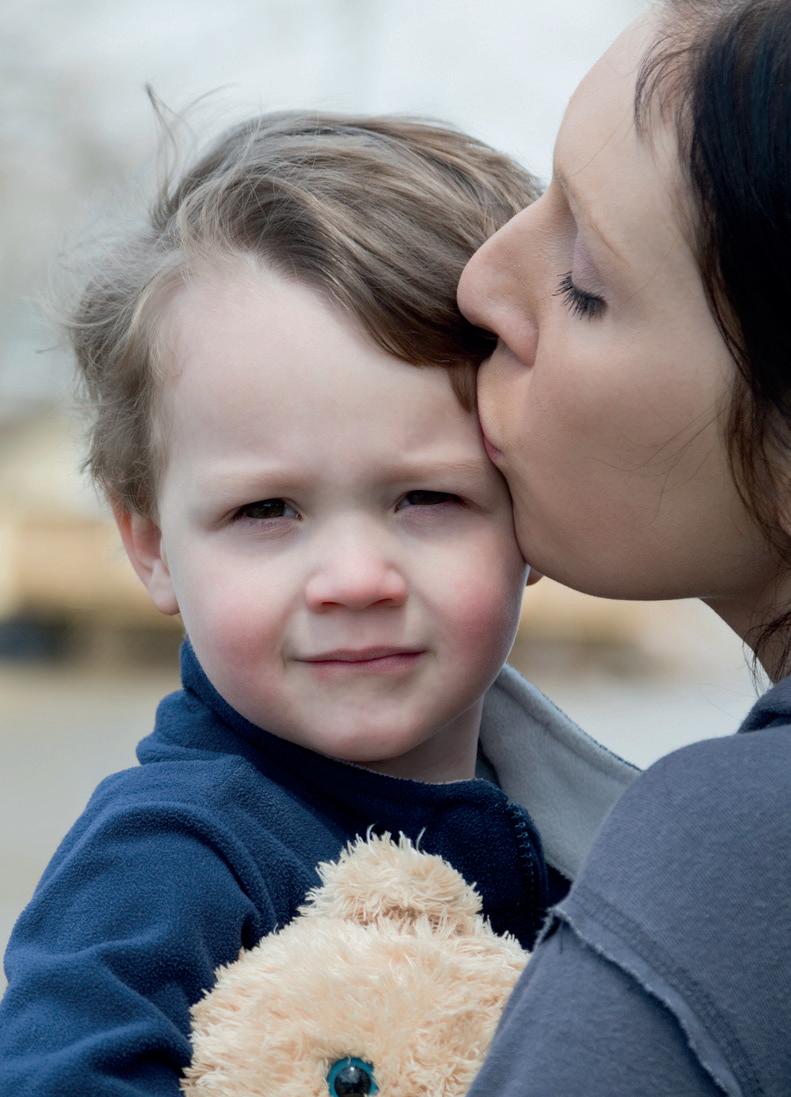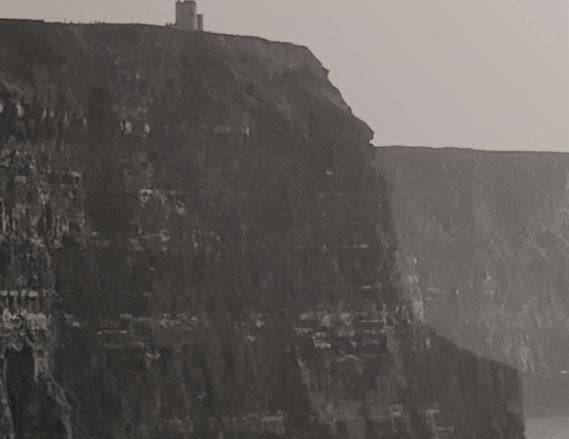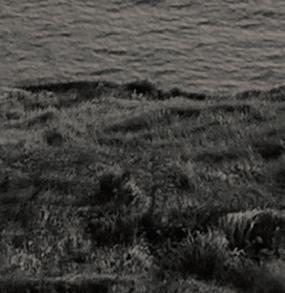






















IRELAND

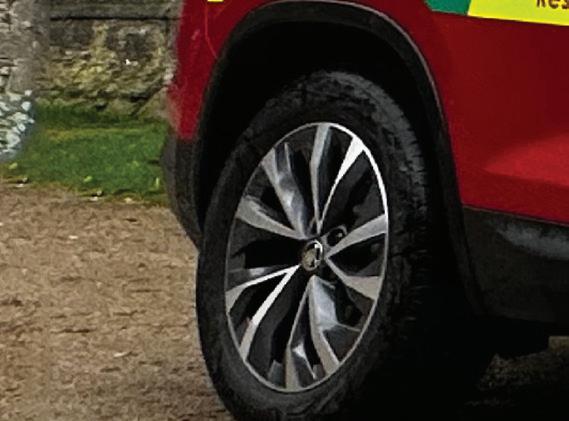







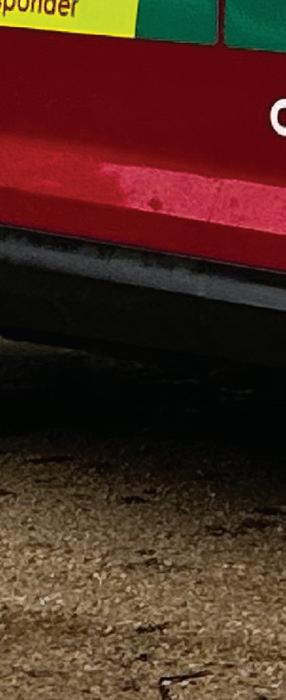
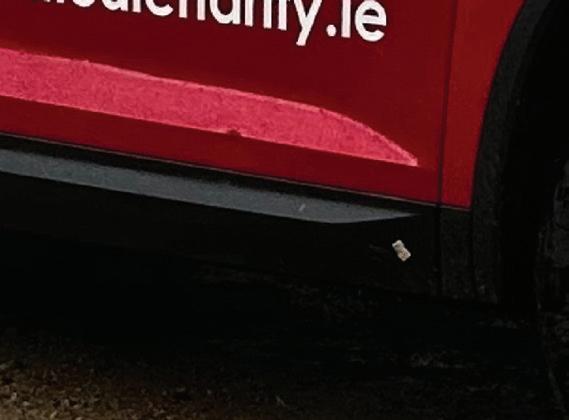


DUBLIN FIRE BRIGADE’S EXTRICATION TEAM BRINGING HOME NEW SKILLSETS


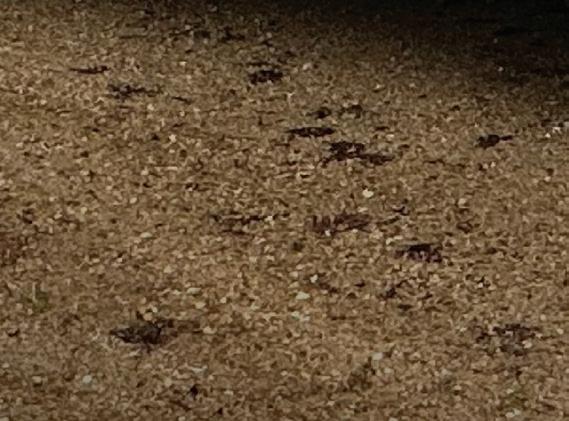

AUTHOR TIM BOOTH’S BOOK ON THE PARAMEDIC EXPERIENCE CALLING IT OUT








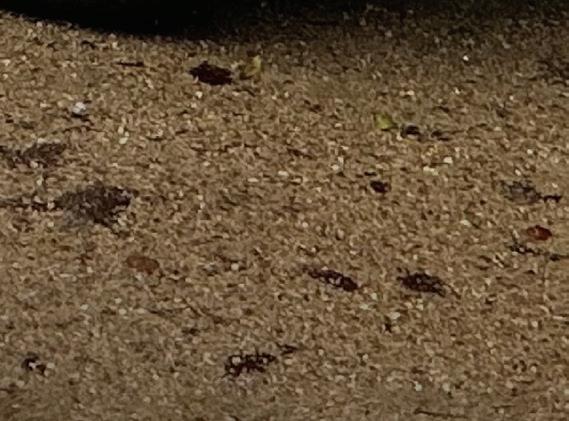




EMPOWERING




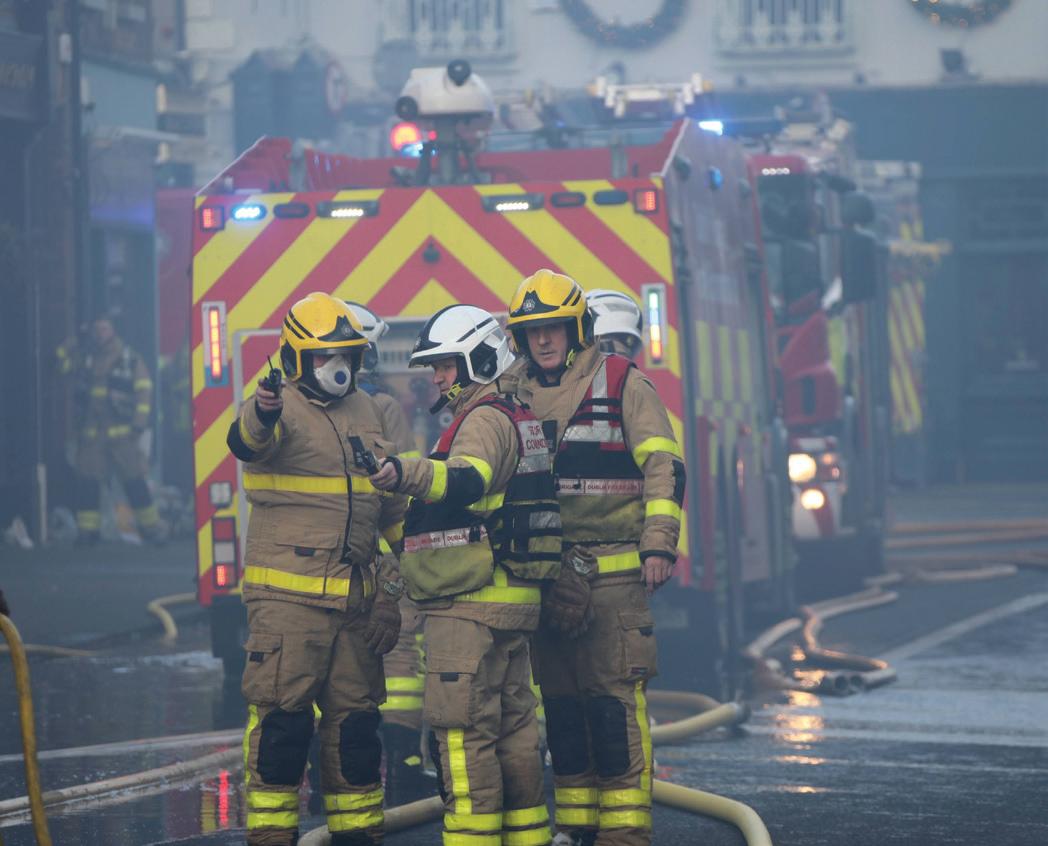


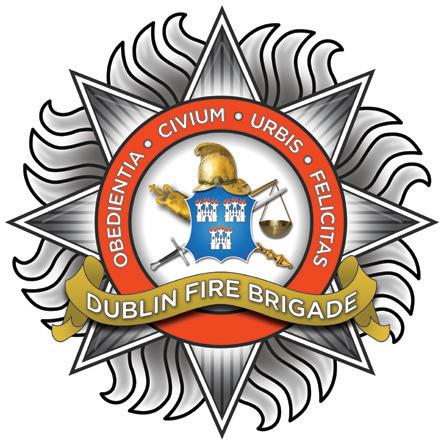
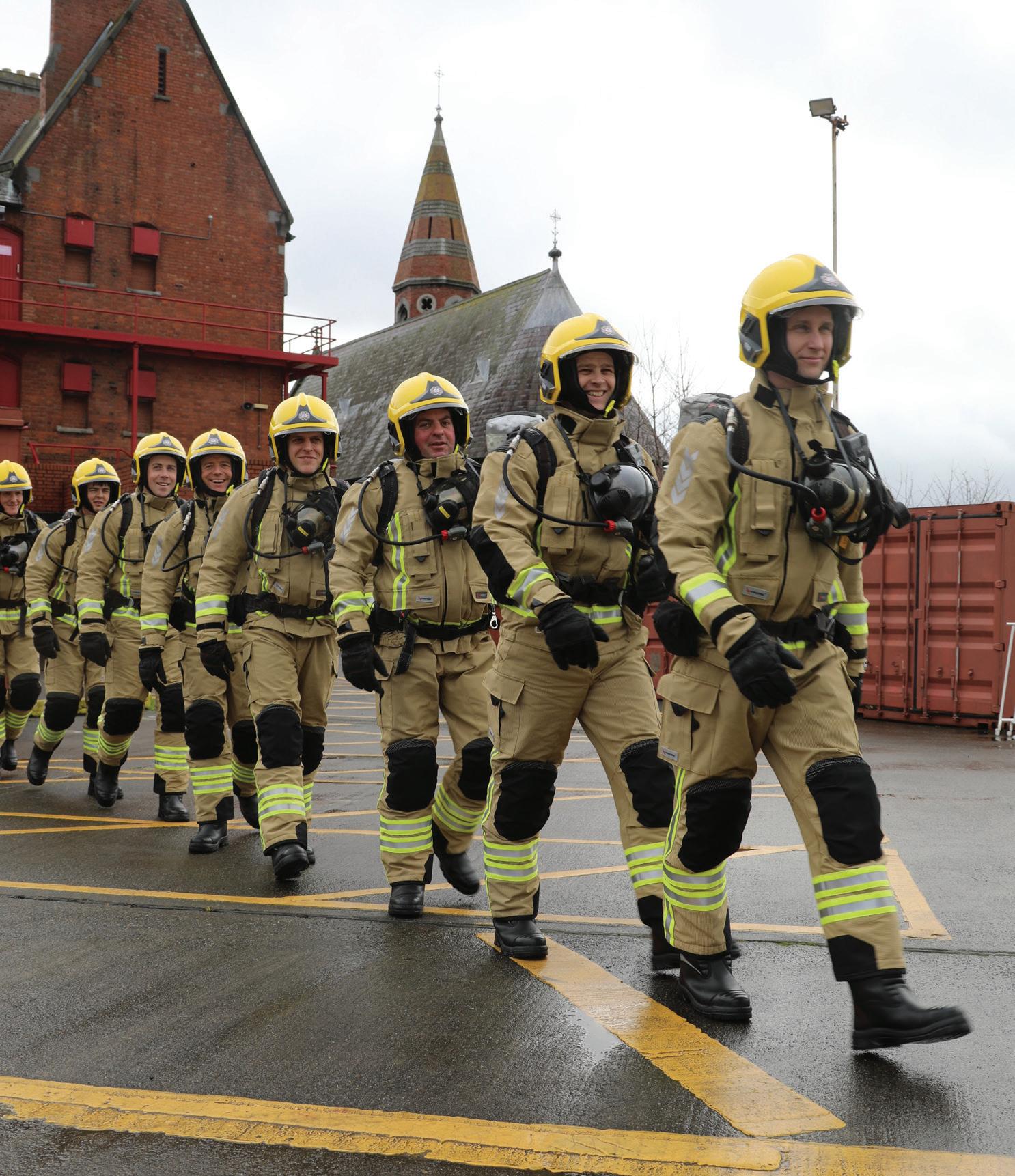

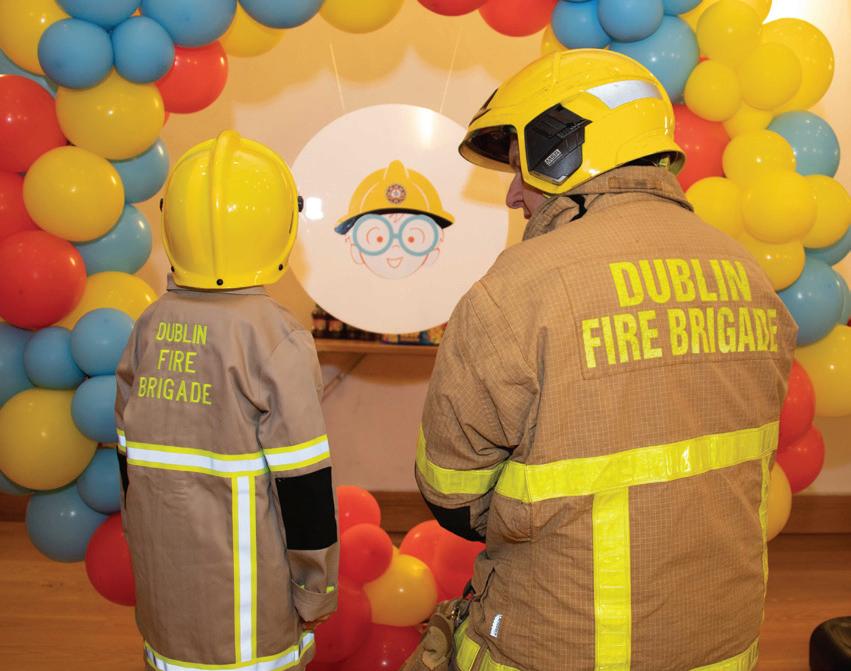

PROTECTING THE CITY AND COUNTY SINCE 1862

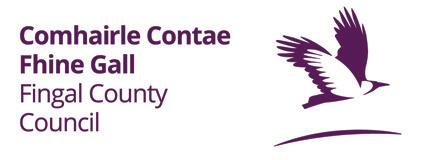






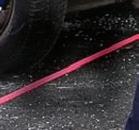
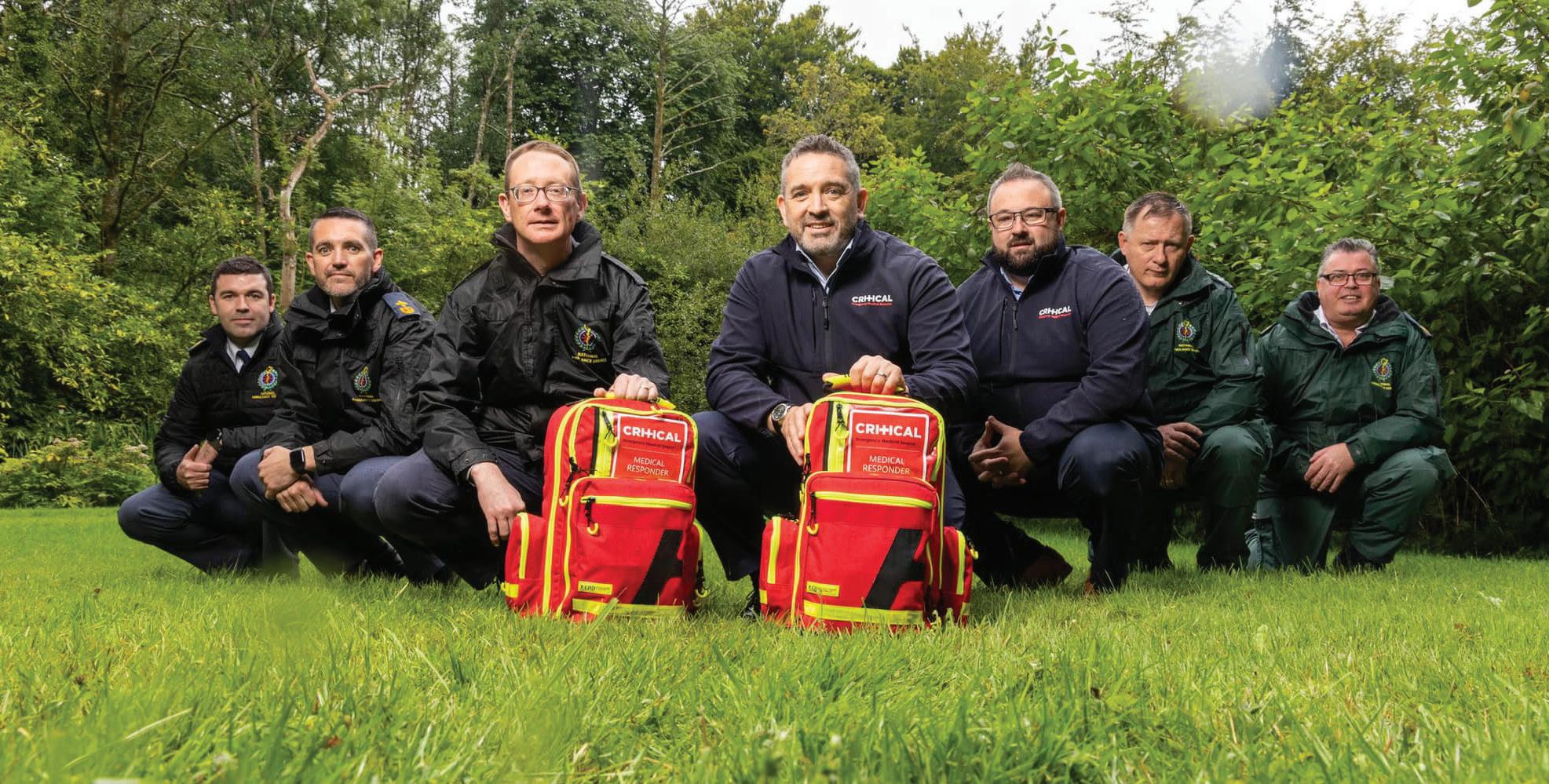







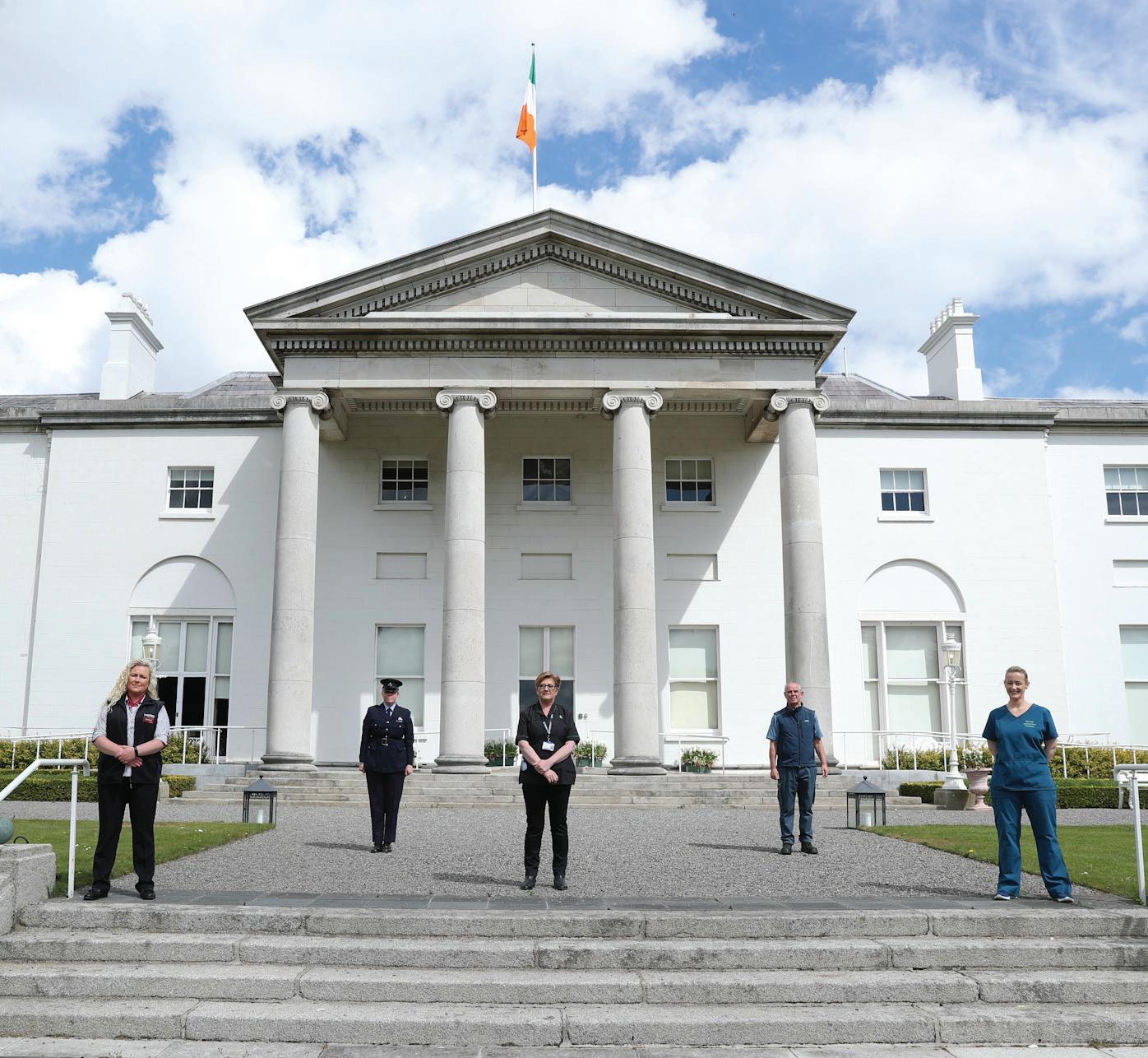

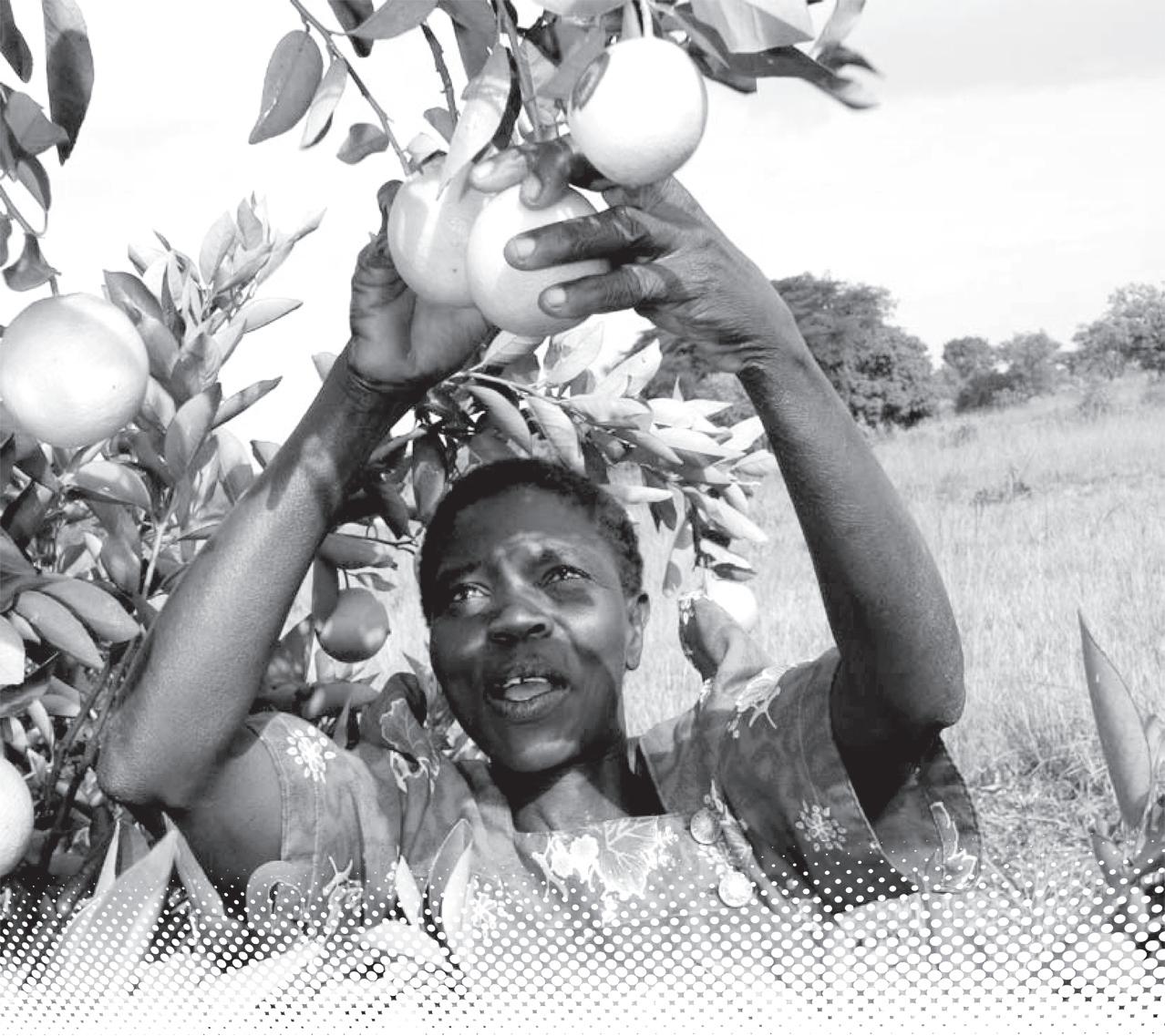
Dear readers,
Editor: Adam Hyland
Contributors: Adam Hyland
Creative Director: Jane Matthews
Designer: Neasa Daly
Cover Credit: CRITICAL
Photography:
An Garda Síochána, Road Safety Authority, Dublin Fire Brigade, Andy Rogers, John McNally, HSE, NAS, Coast Guard, Óglaigh na hÉireann/Irish Defence Forces, Tim Booth, MacMillan Australia, Merrion Press, Gill Books, 4th Estate, Drager, University of Texas, Jump Aero, Suppression Gear Inc.
Production Executive: Claire Kiernan
Publisher:
Ashville Media Group, Unit 55, Park West Road, Park West Industrial Estate, Dublin 12, D12 X9F9.
Tel: (01) 432 2200
Fax: (01) 676 6043
Managing Director: Gerry Tynan
Chairman: Diarmaid Lennon
Publisher’s Statement:
The information in Ambulance Ireland is carefully researched and believed to be accurate and authoritative, but the Publisher cannot accept responsibility for any errors or omissions. Statements and opinions expressed herein are not necessarily those of the Editor or the Publisher.
Copyright © Ashville Media Group Ltd. No part of this publication may be reproduced, stored in a retrieval system or transmitted in any form or by any means without written permission from the Publisher.
Welcome to the 2024 edition of Ambulance Ireland. As always, we bring you the latest news and features covering Ireland’s medical and emergency services sectors, as well as interesting and inspiring stories from our frontline personnel and from around the globe.
In these changing times, one thing that is permanent is the dedication and commitment of all emergency service and frontline personnel, and we must remember that a huge amount of thanks must go to those people who help keep us safe.
Despite being a small country, there are still parts of Ireland that do not have adequate access to a necessary life-saving emergency response, but the charity CRITICAL are working hard to increase the network of first responders, and to empower communities to save lives locally through their support of Community First Responder groups. In this issue, we talk to Operations and Standards Manager Edward Walsh and Paramedic and CRITICAL volunteer Sean Horgan about their tremendous work in establishing, supporting, training and financing groups who can help save lives, and their partnership with the National Ambulance Service that sees a huge number of trained paramedics join their network.
Any paramedic will tell you that they face callouts that are not medical emergencies, and in his no-holds-barred but lighthearted book You Called An Ambulance For What?, Australian Intensive Care Paramedic and author Tim Booth reveals what it is like to work on a busy ambulance in Sydney. He talks about timewasting and bizarre incidents that are both funny and shocking, but raises important issues about workloads, triaging and burnout that frontline personnel will empathise with all too well.
We also take a look at the Dublin Fire Brigade’s Extrication Team, and how they are bringing their expertise to the world stage while also returning home with new techniques and best practices that they can share with their colleagues and other emergency services around Ireland. Theirs is a fascinating story that is well worth the read.
Also included are a review of the Defence Forces and Coast Guard’s year to see just what is involved in protecting us and keeping us safe on land and at sea.
Elsewhere, we look at the latest road safety stats and campaigns, a new Public Access Defibrillator initiative and new charity partnership for Dublin Fire Brigade, the largest Major Incident simulation ever held in Ireland that saw frontline personnel respond to a multi-agency emergency exercise, and see what’s new in the world of emergency services technology.
Best wishes,
Anew scheme has been launched that will see qualifying nursing homes receive additional financial support to improve infection prevention and fire safety.
Under the Nursing Home Resident Safety Improvement Scheme (RSI), some €10million has been made available to ensure both private and voluntary nursing homes comply with safety regulations.
Launched on 1 January, and with a closing date for applications of 15 November 2024, up to €25,000 will be made available to each qualifying nursing home, with payments made on a quarterly basis. Eligible claims can be backdated to 1 January 2020 if an applicant can show work has been undertaken between 1 January 2020 and 1 January 2024. The Scheme will be overseen by the Department of Health, the HSE will administer it, and the National Treatment Purchase Fund will administer the application process.
More than two out of three GPs in rural Ireland are not taking on new patients, and some have waiting times of up to two weeks for an appointment, according to a new study by the Irish Independent. A survey of 275 registered GPs nationwide showed that just 32% of practices outside the country’s main cities are open to taking on new patients, compared with almost half of urban practices. Waiting times for an appointment varied greatly between rural and urban areas. On average, patients in Dublin can expect to be seen on the same day, while those looking to book a non-urgent appointment with their GP in the Midlands could be waiting up to two weeks.
An Irish Medical Organisation trade union representative said attracting GPs to rural areas had become “significantly more di icult in the past decade”, citing a “number of obstacles” such as lack of su icient supports, distances to other services and overlong hours of commitment, as well as di iculties in obtaining sick and holiday leave. “There are not enough GPs in Ireland to meet patient numbers and in rural Ireland, the problem is even greater,” a spokesperson said, outlining that there are seven GPs per 10,000 people, which they said needs to get to at least 12 to “ensure a safe and e ective service”.
Dublin’s Mater Hospital is using Artificial Intelligence to help doctors assess patient scans and reduce the time it takes to provide life-saving treatments, making it the first hospital in the country to employ the technology in its radiology department. The technology had already been used in more than 15,000 scans by January, with 700 pathologies correctly flagged within 2-3 minutes of completion. They included 500 intracranial haemorrhages and 200 pulmonary emboli, a blood clot that has travelled to the lung.
“The overall accuracy of the software in real Irish clinical practice has been deemed to be highly-sensitive and specific, with an accuracy rate of more than 90%,” the hospital said in a statement.
It added that the hospital has implemented four new technologies, including AI assistance, on CT pulmonary angiograms, incidental pulmonary embolism notification, intracranial haemorrhage detection and cervical spine fracture detection on CT C-Spine scans. The screening platform, made by Aidoc, operates on an ‘always on’ basis, meaning it is constantly running in the background in order to analyse medical imaging data, flag urgent findings and highlight priority cases.
The Mater plans to trial further specialised AI tools this year, focusing on the analysis of bone and chest X-rays in the emergency department.
The tools designed to accelerate patient triage “are set to further enhance the Mater’s diagnostic capabilities and reduce waiting times for patients, while freeing up valuable time for frontline healthcare sta ,” the hospital added.
Some 300 doctors have signed a letter to the Medical Council expressing their alarm at changes to the ‘end-of-life care’ and ‘conscientious objection’ sections as presented in the new guide on professional conduct and ethics. Concerns relate primarily to the deletion of the line: “You must not take part in the deliberate killing of a patient” and an update to the conscientious objection section that states doctors “must” make
arrangements to enable a patient to obtain the required lawful treatment when unable to do so themselves, whereas previously it stated that a doctor “should” make arrangements. With assisted death and euthanasia illegal in Ireland, the guide states that doctors have a duty to comply with the law, but this leaves a grey area regarding the new wording for the guide that came into e ect on 21 January, doctors say.
Ireland is performing well in the use of behavioural and cultural insights (BCI) to support better health, according to research from the World Health Organisation. Global evidence shows that using BCI can improve health outcomes in areas such as immunisation, attendance at appointments, antimicrobial resistance, health emergencies, and mental health. Ireland is one of just eight out of 44 countries that scores at least 3 out of 5 across all five strategic commitments under the European regional action framework for BCI in health, showing a strong baseline from which to achieve the targets set out in the years to 2026.
A new workplace health and wellbeing service for Non-Consultant Hospital Doctors (NCHDs) has been launched by the HSE. The NCHD hub will o er support with occupational health assessments, with services including advice on workplace adjustment for psychological and medical issues, disability and work advice, work-related stress support, fitness for work assessments and psychological support relating to the role.
It is available to anybody with a NCHD contract with the HSE or a Section 38 service, and can be accessed by self-referral or via a referral from a local occupational health service, medical manpower, national specialty director or relevant training body.
A study by the RCSI School of Population Health has found that future developments to Irish stroke services must prioritise specialist community-based rehabilitation, ongoing support for life after stroke, and better information and support for navigating services. The study, published inn PLOS ONE, featured the opinions of people directly a ected by stroke, including survivors, family carers and healthcare professionals. The need for improved sta ing was also emphasised, along with access to specialist acute care and support for mental health, while survivors and carers also expressed a need to improve the speed of access to services for those with more unusual or atypical stroke symptoms. The study was carried out in collaboration with the Irish Heart Foundation and researchers from UCC and Beaumont Hospital, and was funded by the Health Research Board.

New eco-friendly ambulances purchased by the NHS to meet green targets are being temporarily shelved because some paramedics are too tall or have feet too big to drive them.
NHS ambulance trusts across England bought adapted Fiat Ducatos to replace their older Mercedes vehicles, but ambulance sta say they are left waiting up to seven hours to locate an ambulance they can actually drive.
A whistleblower said paramedics with size 12 feet can’t use the Fiats as the special reinforced toe-capped boots they wear are too big to move safely from one pedal to another. Another said the vehicles also have less room for paramedics to stand by a patient’s side, which can create worse outcomes if that person is su ering a cardiac arrest.
The Fiats comply with all UK safety regulations and there is no suggestion they are unsafe on the road, but one paramedic said they are “detrimental to me doing my best for the patients” and added: “They can’t go safely from the brake to the accelerator. We’ve got people who are tall, who have size 14 feet. When they try to drive, they can’t move their foot from one pedal to the other because of their boots.”
Following the raised concerns, South East Coast Ambulance vowed to replace the new Fiats, saying that as many as one in five drivers can’t use them, while the East of England Ambulance Trust said 35 of the 145 sta who underwent ergonomic assessment were found not to be able to drive the ambulances.

The 1990 Suvasarya ambulance service has become the first in Asia to adopt mixed reality and AI technology for real-time doctor-paramedic communication in a pilot project taking place in Colombo and Ja na. The innovative partnership with Wavenet and Microsoft marks a major advancement in emergency medical care for the region. The new system directly connects doctors and paramedics through AI, enabling real-time consultation and faster decisionmaking, ultimately leading to quicker and more accurate medical interventions. Following the pilot project, it is hoped the technology will be expanded island-wide later this year. Announcing the project, Minister Ramesh Pathirana said the initiative “reflects Suvasarya’s unwavering commitment to providing high-quality emergency care to all Sri Lankans”.

Wellington air ambulance charity service Life Flight has purchased three Beechcraft King Air turbo prop planes worth a total of $7million (€4million), with a long-term plan of assisting seriously ill and injured patients over the next decade. The planes, which are also used by the Royal Flying Doctors Service in New South Wales, are described as “the Porsches of the skies”, and are smaller than the two Jetstream 32s they are replacing, which Life Flight says is to their advantage. “We can get into places we weren’t able to do previously, and that’s critical because it’s connecting up rural, regional communities to specialist care they haven’t had access to,” says Life Flight trustee and former flight nurse Karyn Hathaway. Life Flight transports on average 32 patients a week to specialist medical treatment facilities across the region.

The Ministry of Health has banned newly-acquired government ambulances from transporting dead bodies, emphasising that the vehicles should only be used to transport patients in need of life support. The 116 ambulances were purchased by the government recently with support from Japan, the World Bank, Global Fund and other agencies, and were distributed to a number of constituencies earlier this year. Dr Diana Atwine, the Permanent Secretary at the ministry, said: “I have had people come to my o ice to take dead bodies. I want to categorically say that our ambulances are equipped with expensive equipment and are not meant to transport bodies. We now have private service people who can handle transporting dead bodies.” “The availability of ambulances will play a crucial role in saving lives during medical emergencies such as accidents, childbirth, among others,” said Prime Minister Robinah Nabbanishe.

The Irish Coast Guard responded to a total of 2,788 incidents in 2023, making it the second busiest year since 2018, surpassed only by the 2,976 responses in 2021, according to their annual end of year summary of statistics.
e incident count recorded by the maritime emergency organisation’s three Rescue Coordination Centres at Malin Head, Valentia Island and MRCC Dublin, covers the range of services provided by the Coast Guard, which include maritime search and rescue, maritime casualty and pollution preparedness and response.
ey also assisted An Garda Síochána in open country missing person searches and mountain rescue, the National Ambulance Service in providing an Air
Ambulance and Helicopter Medical Emergency Service (HEMS) both inland and to island communities, as well as provision of other supports to the Emergency Services.
August once more proved to be the busiest month, with 391 incident responses recorded.
e Coast Guard’s 44 units were mobilised on 1,278 separate occasions, with their helicopters operating out of bases at Dublin, Waterford, Shannon and Sligo conducting a total of 796 missions. Coast Guard helicopters also conducted 174 air ambulance ights in support of o shore island communities.
e Royal National Lifeboat Institution also had a very busy year, with their lifeboats launched on 850 occasions, while the community inshore rescue service was also launched on 76 occasions over the course of the year.
In terms of lives saved, which the Coast Guard de nes as “assistance
provided that prevented loss of life, severe risk to life, or protracted hospitalisation”, critical assistance was provided to an incredible 665 persons over the course of the year.
Having begun construction in September of 2022, the new Coast Guard Station at Bunmahon, Co Waterford, was o cially opened in 2023, which Minister of State with special responsibility for the Irish Coast Guard, Jack Chambers, TD, said was “a particular highlight”. At the opening, he added that he was “committed to delivering a series of other similar developments commencing with Westport and Greystones”.
Following Government approval, a contract for provision of a new Coast Guard aviation contract was also signed in August, providing for the retention of day and night SAR helicopter services. e contract also provides for the provision of a day and night Fixed Wing service located at Shannon, which will enhance the

Coast Guard’s Search and Rescue and environmental monitoring capabilities.
e helicopter service will be delivered by a eet of six AW189 helicopters, the rst of which is scheduled to enter service in Shannon later this year, to be followed by Sligo, Waterford and Dublin in the rst six months of 2025.
Upon the announcement of this contract, Minister Chambers said: “I want to thank all the IRCG volunteers and sta for their professionalism and commitment, and want to particularly recognise the work of the Watch O cers at Rescue Coordination Centres in Malin, Valentia and MRCC Dublin.
“During the year, I had the opportunity to visit several Volunteer Coast Guard Units around the country that enabled me to recognise the services they provide to their communities, and view rst-hand the various challenges they encounter.”
With the ongoing public safety message of having the capacity to Raise the Alarm and Stay A oat central to the prevention of
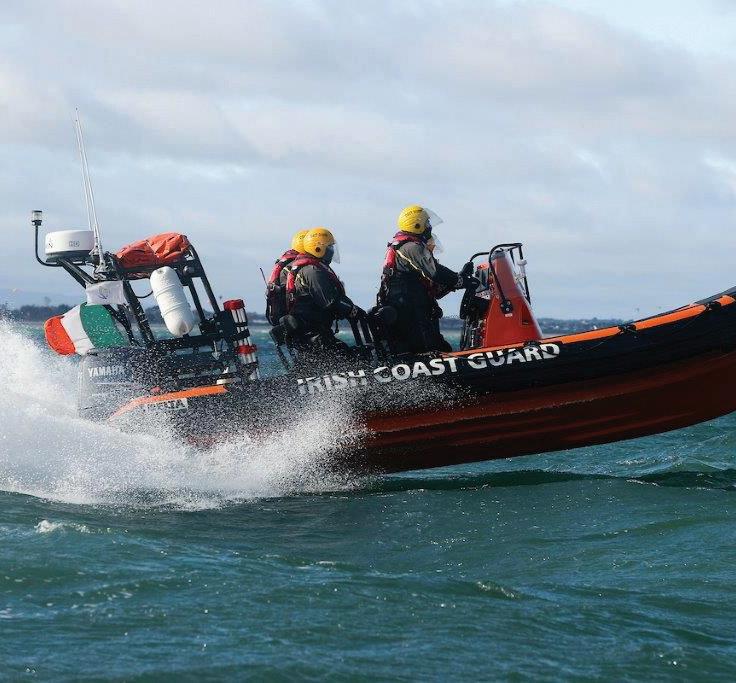

drownings at sea, along the coast and on inland waterways, the Coast Guard’s core message of Stay A oat –Stay in Touch continues to be shared on www.safetyonthewater.gov.ie and across multiple media, and highlights the importance of never engaging in any commercial or recreational boating activity without wearing a life jacket or Personal Flotation Device, coupled with the capacity to raise the alarm via VHF radio, Personal Locator Beacon (PLB) or EPIRB.
e message also makes clear that any maritime or coastal activity should be supported by informing shore-based colleagues of intended activity and anticipated return time. Mobile phones, it stresses, should not be considered a suitable substitute
or be relied upon as the only means of emergency communication at sea.
e annual review noted an incident late in 2023 where four people engaged in shing from a boat were rescued from the sea, highlighting the value of wearing a PLB, as it proved to be the only means of raising the alarm and enabling the Coast Guard to mount a successful search and rescue mission.
A new Safety on the Water App is also planned to be launched by the Coast Guard in 2024 as part of the gov.ie –Safety on the water – campaign, which will provide members of the public with immediate access to water safety information for planning coastal and water-based activities. e app is set to be launched under the slogan of ‘ ink Water Safety – Plan and Prepare’.
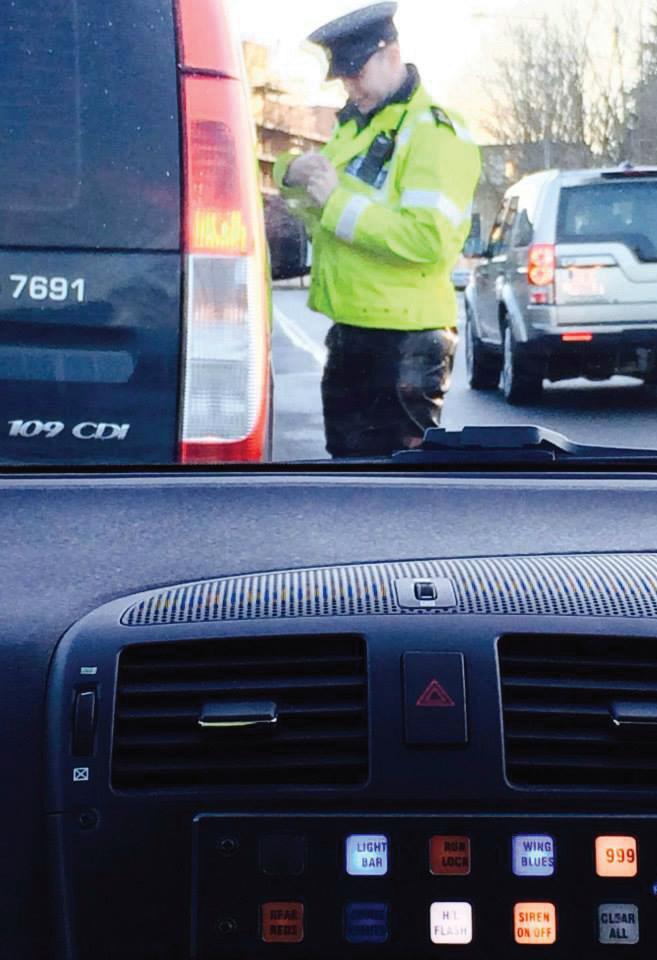

Despite ongoing safety campaigns, an increase in road policing by An Garda Síochána, and improving technology to detect speeding, the message of driving with care and consideration for ourselves and others is still, unfortunately, struggling to get through to a minority of road users.
Road fatality statistics for last year were extremely dispiriting, with the number of people killed on our roads increasing by 19% compared to 2022. A total of 184 died in fatal collisions, representing 29 more deaths than the previous year.
With 144 deaths, the majority of fatalities were male (78%), while there were 40 females killed (22%). e number of pedestrians killed continued to rise, to 44, which represents the highest gure since 2011. ere were also 34 passenger fatalities, 26 motorcyclists killed, eight cyclists and three e-scooter users.
More than a quarter of road deaths involved people between 16 and 25 years old, compared to 16% in 2022, and 46% of fatalities occurred on weekends.
Tipperary (16), Dublin (15), Cork (15), Galway (13), and Mayo (12) were the counties registering the highest number of deaths.
Speaking about the gures released on 1 January by the Road Safety Authority, Minister of State at the Department of Transport, Jack Chambers, noted that new legislation will come into e ect this year to bring the number of road deaths down: “We were able to progress a number of important reforms in 2023 which are speci cally targeted at the lifesaver o ences which we know are the main contributors to fatal road collisions. e Road Tra c Bill received cabinet approval in December and we will be working to have this essential piece of legislation progressed through the Dáil in early 2024. Work is well underway on a number of other initiatives in partnership with other Government departments and agencies
to be delivered throughout this year.”
Liz O’Donnell, Chairperson of the RSA also noted that improved technology will help reduce the number of lives lost on our roads: “I welcome the proposed introduction of a National Strategy on Camera Based Enforcement which, I understand, will be prioritised in 2024. A National Strategy will ensure a consistent approach to the selection and use of the di erent forms of camera technologies as well as supporting the development of a roadmap for the rollout of camera-based enforcement and ensuring that enablers such as funding and other critical resources are identi ed.”
Chief Superintendent Jane Humphries of the Garda National Roads Policing Bureau also underlined both the great work being done by gardaí, and the challenges faced, saying: “Gardaí nationwide have remained focused on detecting those committing the o ences known and proven to be leading factors in serious injury and fatal road tra c collisions. is year, Gardaí conducted over 87,700 checkpoints. Some 7,707 people were arrested on suspicion of driving under the in uence of an intoxicant. In the region of 200,000 speeding o ences were detected, over 5,300 xed penalty notices were issued for not wearing a seatbelt and more than 18,800 motorists were ned by Gardaí for using their mobile phone.
“ ese gures demonstrate that, while the majority of road users support our collective work to keep people safe by adhering to the rules of the road, there are still plenty that need to re ect on their driving behaviours. ere is room for improvement. We must all pay close attention to our collective responsibility to make Irish roads safer and to reduce the number of lives lost and people seriously injured in road tra c collisions.”
Unfortunately, the tragic statistics for 2023 have followed on into 2024, and by mid-February, there had already been 24 road deaths recorded across the country,
which is a concern for Government as Ireland hosts an EU Road Safety Conference in Dublin on 16 April.
Earlier this year, Junior Minister Chambers was compelled to tell a radio audience that he feels there is a “culture of recklessness” causing fatalities on Irish roads, again citing legislation that will help curb this behaviour.
“We know there is a culture of recklessness on our roads – people taking a chance whether that’s speeding or checking their phone,” he said. “We’re bringing a safer default baseline for speeding, particularly for those roads that can t only one car, those winding rural roads where we see a lot of accidents. We’re also working with the RSA in campaigns and advertising to bring that wider awareness.
“People are aware of it but there are still a high number of people recklessly taking a chance, trying to save an extra few seconds, risking their own lives and others’ lives. Gardaí had over 87,000 checkpoints, over 200,000 people caught for speeding, 18,000 caught for using a phone 7,700 arrested for intoxicated driving. at shows in the wider public sphere a cohort of people that are just ignoring Gardaí.”
is recklessness is evident in new research by the RSA that shows that in the last 12 months, one in ten people surveyed have driven a er consuming alcohol. Of those who admitted consuming alcohol and driving, 14% were male and 6% female, 14% drive for work, and 24% have a history of collision involvement.
Of concern was the fact that only 73% of motorists surveyed agreed that “most of my acquaintances/friends think driving under the in uence of alcohol is unacceptable” in comparison to 85% of drivers surveyed in 2019.
Tackling speeding is another primary concern, and Junior Minister Chambers also con rmed earlier this year that lower speed limits will be put in place by the end of the year that will be “sequenced and synchronised nationally”.

Under new laws, speed limits will be lowered from 100kmh to 80kmh on national secondary roads, from 80kmh to 60kmh on local and rural roads, and 30kmh in town centres and housing estates.
is new legislation is underlined by a new RSA campaign that highlights the “speed fallacy”, demonstrating to drivers that the time they save when going over the speed limit by just 10kmh is minimal and not worth losing their licence, or worse.
is campaign, as with all other RSA campaigns, has been shared on radio, TV, digital, traditional billboard and social media platforms.
With the startling gures that show that more than a quarter of all road deaths in 2023 involved people between 16 and 25 years old, it is refreshing to know that students have taken this information to heart. Ahead of an extensive Garda Roads Policing Operation for the St Brigid’s Bank Holiday Weekend in February, the second Road Safety
Reimagined campaign was launched as a collaboration between University of Limerick business students, An Garda Síochána, the RSA and Limerick City and County Council.
e aim is to reimagine road safety through contemporary marketing and to develop solutions to positively a ect young driver behaviour.
Project ideas include “comparing the road to the pitch”, and “one high can lead to a six-foot low”, which have been shared and ampli ed across Garda social media platforms.
Chief Superintendent Derek Smart said: “An Garda Síochána is always looking at new and creative ways of appealing to the public to drive safely.
e work created by the students in University of Limerick is very impactful and will hopefully resonate with young drivers. We appeal to everyone to look out for one another on the road. Never ever drive under the in uence, drive at an appropriate speed, always wear your seatbelt and do not use your mobile phone while driving.”
Sarah O’Connor, Director of
Partnerships and External A airs, Road Safety Authority, added: “It is refreshing and reassuring to see new and innovative road safety initiatives presented at the University of Limerick. Driver distraction is thought to play a role in up to 30% of all road collisions. Using your mobile is a signi cant form of driver distraction as it dangerously impairs your ability to monitor the road ahead and react to any hazards in time.
“According to the Driver Attitudes and Behaviours Survey 2023 commissioned by the RSA, 40% of younger people (aged under 35) check apps at least sometimes while driving, compared to 25% of all motorists. Furthermore, 22% text while driving at least sometimes, compared to 11% of all motorists. For all drivers, but particularly for younger drivers, the RSA is saying: would it kill you to put it away?”
Hopefully, this campaign and others spearheaded by the RSA and An Garda Síochána, can help to stop the worrying upward trend of road fatalities once more, but it is up to all road users to help in this challenge.











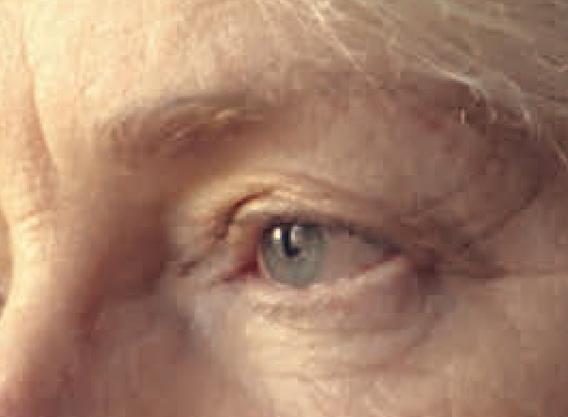
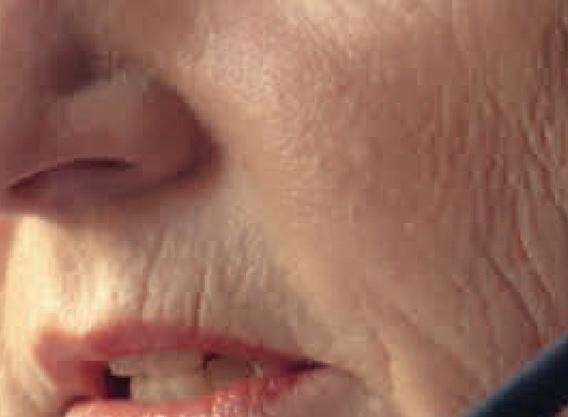
































The Irish Defence Forces continued with a large number of operations both at home and abroad, while also taking on invaluable work to keep the people of Ireland safe in what was a challenging year, with the activities across the Army, Navy, Air Corps and overseas units detailed in the latest Annual Review.


e Defence Forces conducted a wide range of Defence & Security Operations across 2023, including Aid to Civil Power (ATCP) and Aid to Civil Authority (ATCA), supporting An Garda Síochána, Local Authorities and other State agencies.




including re ghting, ood relief and missing person searches. Notable activities ranged from assisting the Department of Foreign A airs Emergency Civil Assistance Team to evacuate Irish citizens from Sudan amid an evolving situation in that country in April, to ood relief operations in Cork in October.
Patrolling 220million maritime acres of sea representing 15% of Europe’s sheries, the Naval Service also had a busy year, conducting 104 sheries boardings, resulting in ve detentions. Vessels from Ireland, the UK, France, Spain, Netherlands, Norway, Russia and Belgium were boarded and inspected in 2023.


Operations included the Army conducting more than 101 ATCP Operations supporting An Garda Síochána involving Explosive & Ordnance Disposal call outs, Prisoner Escorts, Explosive Escorts, Cash Escorts, Specialist Search Operations and VIP visits, including that of US President Joe Biden in April.

Members of the Defence Forces also continued to carry out 365-day armed guard at Portlaoise Prison, the Central Bank and Irish Industrial Explosives, and had a Military Police detachment at Government Buildings.
Military personnel were both on standby and deployed throughout the year for ATCA operations, utilising the skills of highly-trained personnel, specialist search equipment and o -road vehicles for numerous tasks



e Naval Service Dive Section (NSDS) was deployed on 14 occasions, with operations including Joint Task Force Operations, Quay Wall Clearance Operations, Explosive Ordnance Operations, Search & Rescue and Recovery of missing persons, and routine mechanical engineering work on the Naval Service eet.
ere were also three foreign visits in









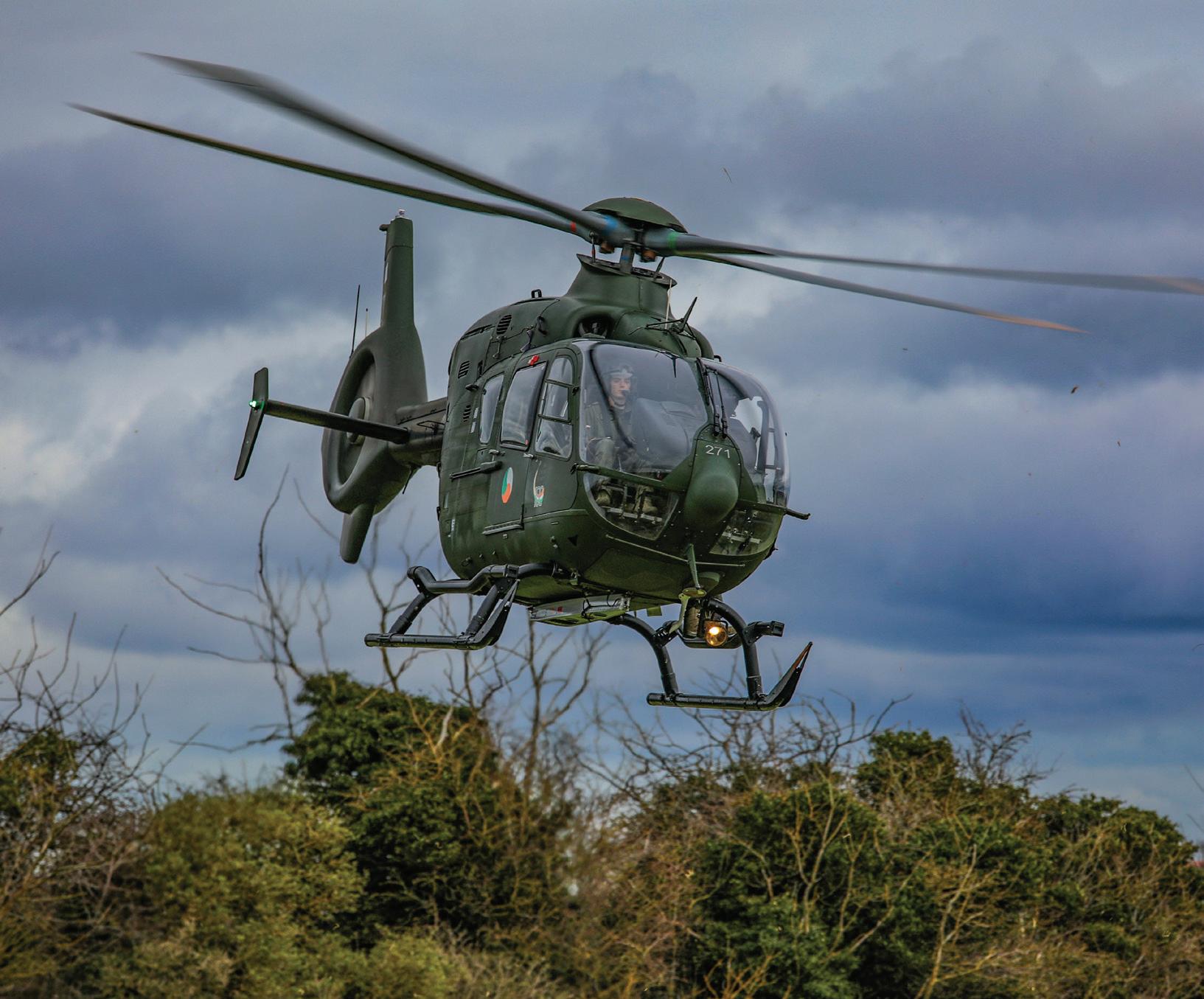

2023, to the UK, Netherlands and EUNAVFOR Op IRINI in the Mediterranean sea.
In addition to national operations supporting other Defence Forces through the provision of air assets, the Air Corps also continued to conduct international operations in support of the Defence Forces and Government Departments using its eet of xed-wing and rotarywing aircra .
e Corps responded to more than 344 Emergency Aeromedical Services (EAS) missions supporting the National Ambulance Service in providing a medical service for seriously ill patients, and conducted 29 inter-hospital Air Ambulance tasks both nationally and internationally.
ere were 50 maritime patrols totalling in excess of 177 hours of Maritime Surveillance Patrol ights, four resupply missions in support of UNIFIL, continued support for the Garda Air Support Unit, and also responded to forest re requests in June, when they provided aerial re ghting support in Antrim, Northern Ireland.
In terms of eet development, the Air Corps received their rst Airbus C295 in June and a second in October to replace the C235 a er 31 years of service. e C295 is now fully operational and will signi cantly enhance the capabilities of the Air Corps and the wider Defence Forces.
A major operation involving all of the Defence Forces took place in September.
On Friday, 22 September, a multiagency Counter Narcotics Joint Task Force (JTF) was formally stood up under the name ‘Operation Piano’ as a combined e ort involving the Defence Forces, Revenue and Alliance Ground Surveillance (AGS). e Army, Navy and Air Corps jointly engaged with two vessels of interest which were attempting to import large quantities of illegal drugs through Irish waters.
On 24 September, a dynamic security situation developed o the South East Coast of Ireland when the ship Castlemore ran aground o the Wexford coast. Two suspects were rescued from the trawler in poor weather and escorted to the LE William Butler Yeats where Garda personnel took them into custody.
Intelligence indicated that a second ship, the cargo ship Matthew, should be designated the primary Vessel of Interest. e bulk carrier with 20 crew was believed to be carrying greater quantities of illegal drugs, and Customs requested the assistance of the Defence Forces to board it.
e LE WB Yeats tracked the vessel throughout 26 September, with the Army Ranger Wing deploying by Fast Rope Helicopter Insertion to gain control of the vessel, preventing the destruction of
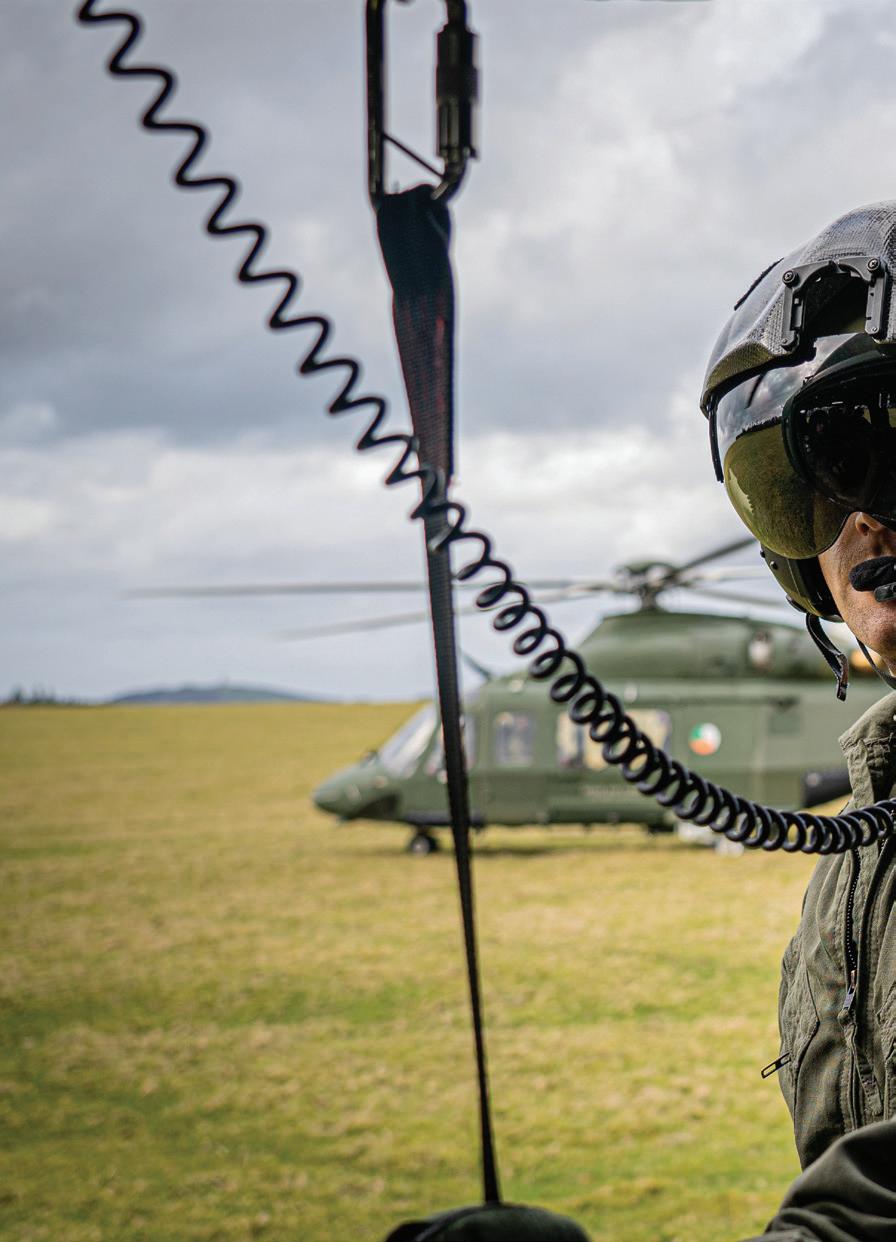

any potential contraband or evidence on board. Both AGS and Customs Legal Enforcement Detachments boarded the vessel and took charge from the Army Ranger Wing. e Operation resulted in the largest ever drug seizure in the State.
With the longest unbroken record of overseas service with the United Nations of any country, since rst deploying in 1958, the Irish Defence Forces continued their commitment in 2023.


Defence Forces personnel were deployed on UN, NATO Partnership for Peace, EU Common Security and Defence Policy (EU CSDP) and Organisation for Security and Cooperation (OSCE) Peace Support and Crisis Management Operations across 11 missions in 12 countries.
ere are currently 546 Defence Forces personnel serving overseas. e largest deployment is with the UN Interim Force in Lebanon, where 353 Irish soldiers currently serve. is includes an Infantry Battalion that is also supported by Poland, Hungary and Malta, who patrol the Blue Line between Lebanon and Israel in the South in order to maintain a safe and

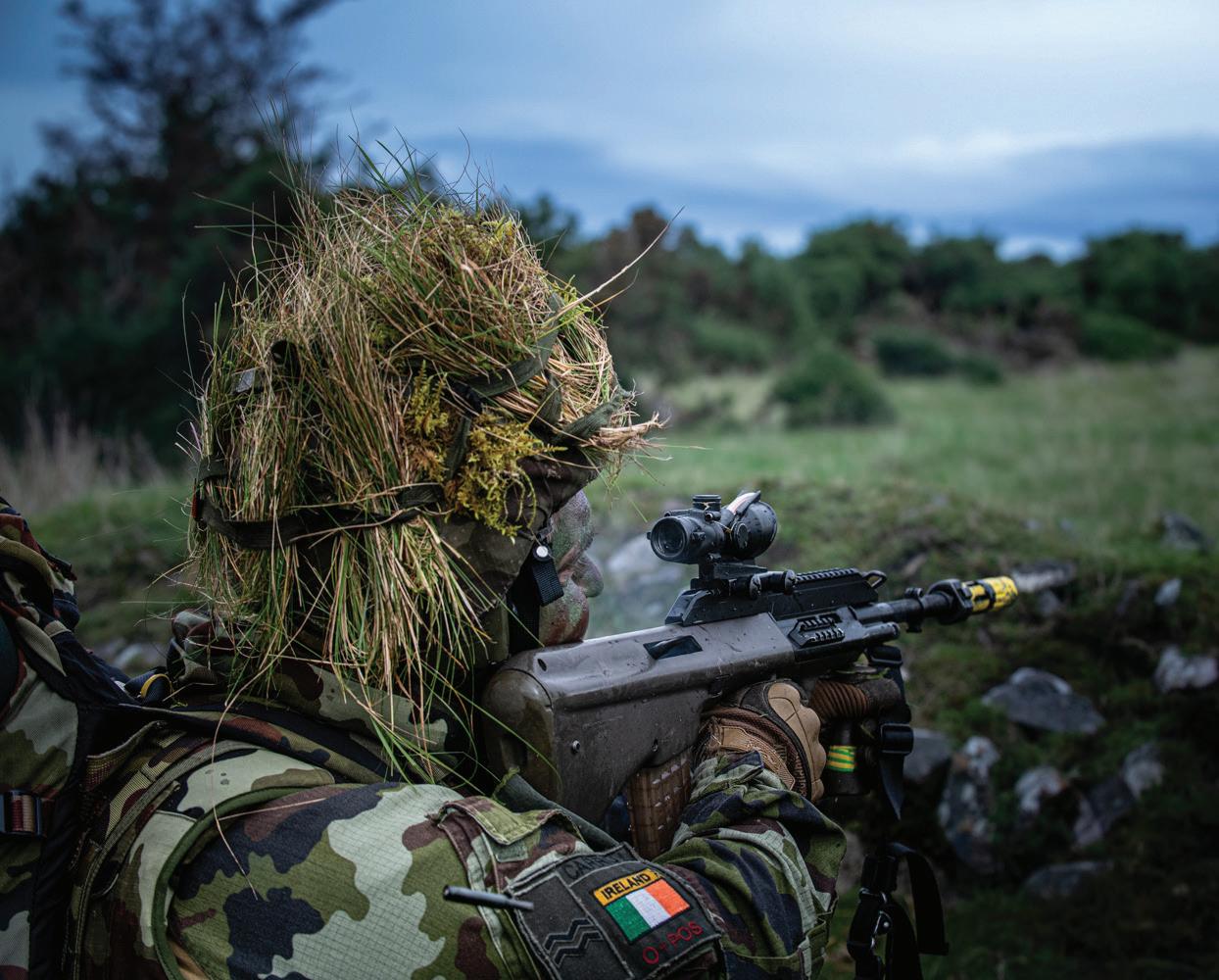
secure environment.
e second largest deployment is with the UN Disengagement Observer Force in the Golan Heights, Syria, where 134 Irish soldiers currently serve, including sta o cers in UNDOF HQ. Ireland withdraws from its role as the mission’s Quick Reaction Force upon completion of this deployment in April 2024.
ere are also up to 30 Irish soldiers serving with the EU Military Assistance Mission, delivering medical, demining and counter IED education and training to Ukrainian Armed Forces, and in September, the Defence Forces concluded its participation with the EU Training Mission to Mali a er a ten-year
commitment to the mission.
e Defence Forces also has a number of soldiers deployed to missions such as EUFOR in Bosnia & Herzegovina and KFOR in Kosovo, and has one o cer deployed to the EU Military Assistance Mission Ukraine as part of a planning cell coordinating training for Ukrainian Armed Forces.
ere are also two Naval Service and one Air Corps personnel deployed to the Operational HQ of the EU Naval Force Mediterranean Operation IRINI in Rome, implementing the UN arms embargo on Libya and disrupting human smuggling and tra cking networks.
e Joint Task Force (JTF) continued to coordinate Defence Forces capability to the COVID-19 mission Operation Fortitude during 2023, requiring 699 work days and 14 vehicle movements in the rst ve months of the year.
As part of Operation Fáílte, e Defence Forces conducted ATCA operations in March in support of the DCEDIY, in order to contribute to the national e ort for the reception, accommodation and sustainment of Ukrainian Bene ciaries of Temporary Protection (BOTP), together with International Protection Applicants (IP).
As of December 2023, Operation Fáilte has contributed 3,123 DF deployed work days (4,779 committed work days), 482 vehicle movements and the deployment of 75 tents, while there were 148 deployed work days (283 committed work days) and 30 vehicle movements dedicated to BOTP Accommodation operations.
When not on operations, the primary focus of the Defence Forces is the development and subsequent delivery of training and education, and in 2023 there were 1,454 courses completed in Defence Forces training installations, with a total of 18,139 students.
A total of 558 personnel completed 23 primary career progression courses across a range of areas including Potential NCO, Junior NCO Logistics, Young O cers Courses, Land Command and Joint Command.
e Leadership, Management and Defence Studies (LMDS) Programme for enlisted personnel continued to develop and be a source of signi cant success. On 11 January of this year, 262 personnel were conferred with awards by SETU for course work completed in 2023.
Defence Forces O cers continued participating in the collaborative LMDS programme with Maynooth University throughout 2023. In total, 129 Awards were conferred by Maynooth University in November 2023.
ere are currently 112 O cers attending Higher Education Institutions,
and in 2023, 34 o cers completed their third-level studies, while the National Maritime College of Ireland (NMCI) conferred Leadership, Management and Naval Studies (LMNS) awards at Level 6 to 36 personnel. Two o cers were conferred with a Level 7 in Nautical Science and four were conferred with a Level 8 in Nautical Science.
During 2023, a total of 64 personnel quali ed under the army’s Trainee Technician Scheme (TTS). Successful trainees comprised of 11 CIS Corps students (Level 7), 18 Ordnance Corps Students (Level 7), 20 Engineer Corps students (Level 6) and four from the Printing Press (Level 6).
Within the Naval Service (NS) during 2023, 11 personnel were conferred under the Naval Service Trainee Technician Scheme, while in the Air Corps during 2023, eight Air Corps apprentices were awarded a Bachelor of Engineering (Level 7) from TUD upon completion of their apprenticeship as Aircra Technicians.
UA was a new venture for the Defence Forces in 2023, with the aim of raising the preparedness of personnel for deployment as members of Mobile Training Teams in support of the mission in Ukraine, while pre-deployment training continued for all other overseas missions coordinated by the Defence Forces Training and Education Branch in collaboration with the Military College in the Defence Forces Training Centre.
Four Mission Readiness Exercises were conducted for larger troop deployments to UNIFIL and UNDOF involving 935 troops, while three Overseas Quali cation Courses were conducted, two for the Small Missions List and one for EUTM Mali.
e Defence Forces participated in more than 30 signi cant military and State ceremonial events in 2023, including the visits of the US President in April and President of Malta in March.
Other ceremonial activities included
a Ceremony of Reconciliation and Remembrance of All ose Who Lost eir Lives in the Irish Civil War that took place in e Garden of Remembrance, Dublin in May, and a ceremony to rededicate the National Army Monument in honour of soldiers of the National Army who died during the Civil War, which took place in Glasnevin Cemetery, Dublin, in July.
e Defence Forces participated in the National Famine Commemoration, held this year in Milford, Co Donegal in May, at which the President attended, while military honours were also a orded to the Military Advisor to UNHQ, Gen Diop, when he visited UNTSI, DFTC in October.
e Defence Forces celebrated Veterans’ Day in McKee Barracks in October where members of ONE, IUNVA and ARCO paraded along with Unit Veteran Associations, while the Defence Forces Remembrance Ceremony was held at e National Memorial, Merrion Square, in November to remember the nine members of the Defence Forces who lost their lives in the past 12 months.
e Defence Forces participated in the annual State commemoration ceremonies, including the commemoration of the 107th anniversary of the Easter Rising at the GPO, the 1916 Leaders Commemoration at Arbour Hill, and at the National Day of Commemoration in Collins Barracks, Cork.
e Defence Forces also participated in nine ceremonies at Áras an Uachtaráin where a total of 27 Ambassadors presented their Credentials of O ce to Uachtaráin na hÉireann.
A quintet for the Army No 1 Band, accompanied by a Combined National and Regimental Colour Party travelled to Messines, Belgium to take part in a ceremony to mark the 25th anniversary of the opening of e Island of Ireland Peace Park in November.
roughout 2023, a variety of other ceremonial and support duties were performed across the country by members of the Defence Forces in support of State and other ceremonial events.










A Simulated Attack at a College Campus Was Part of a Multi-agency Training Exercise

Amajor incident exercise involving a range of emergency services took place at the University of Limerick (UL) towards the end of January.
e extremely realistic immersive simulation, the largest of its kind to ever take place in Ireland, involved members of An Garda Síochána Armed Support Unit, Limerick

Fire & Rescue Service, the National Ambulance Service, the Explosive Ordnance Division (EOD) of the Irish Defence Forces, Limerick Civil Defence and students from paramedics, medicine and nursing at the university.
It was designed to prepare both student and professionals for a multicasualty, major incident where an inter-agency response is required.
e dramatic and realistic scenario played out on the North Campus Plaza of UL, and involved a car crashing into a crowd of people, with the driver remaining trapped in the vehicle and requiring extrication, but a passenger exiting with a handgun and what looked like an explosive device.
In the simulation, this passenger then red shots at the crowd of bystanders before escaping to the River Shannon where he was picked up by Civil Defence’s Swi Water Rescue team and the Armed Support Unit.
At the same time, another passenger exited the vehicle and approached the crowd wielding a
machete, ‘injuring’ a number of people before he was overpowered by onlookers and detained by the Armed Support Unit, while the Explosive Ordnance Division arrived to deal with the ‘device’.
e UL paramedics, nursing and medical students, who were aware the exercise would take place but were unaware as to what the scene would entail, had to react to the exercise as it unfolded, and were tasked with managing the scene and providing emergency assistance to those involved. ere were various levels of injury and distress faced, with more than 50 ‘casualties’ having to be triaged and treated at a eld hospital. Student volunteers played the part of the injured, and went to great lengths to make the situation as realistic as possible. e paramedic students also faced a unique experience when they had to load a stretcher onto the Irish Coast Guard Helicopter Rescue 115 while the rotor blades were still running.
Frank Keane, Senior Clinical Teaching Fellow on the BSc in Paramedic Studies at UL, who
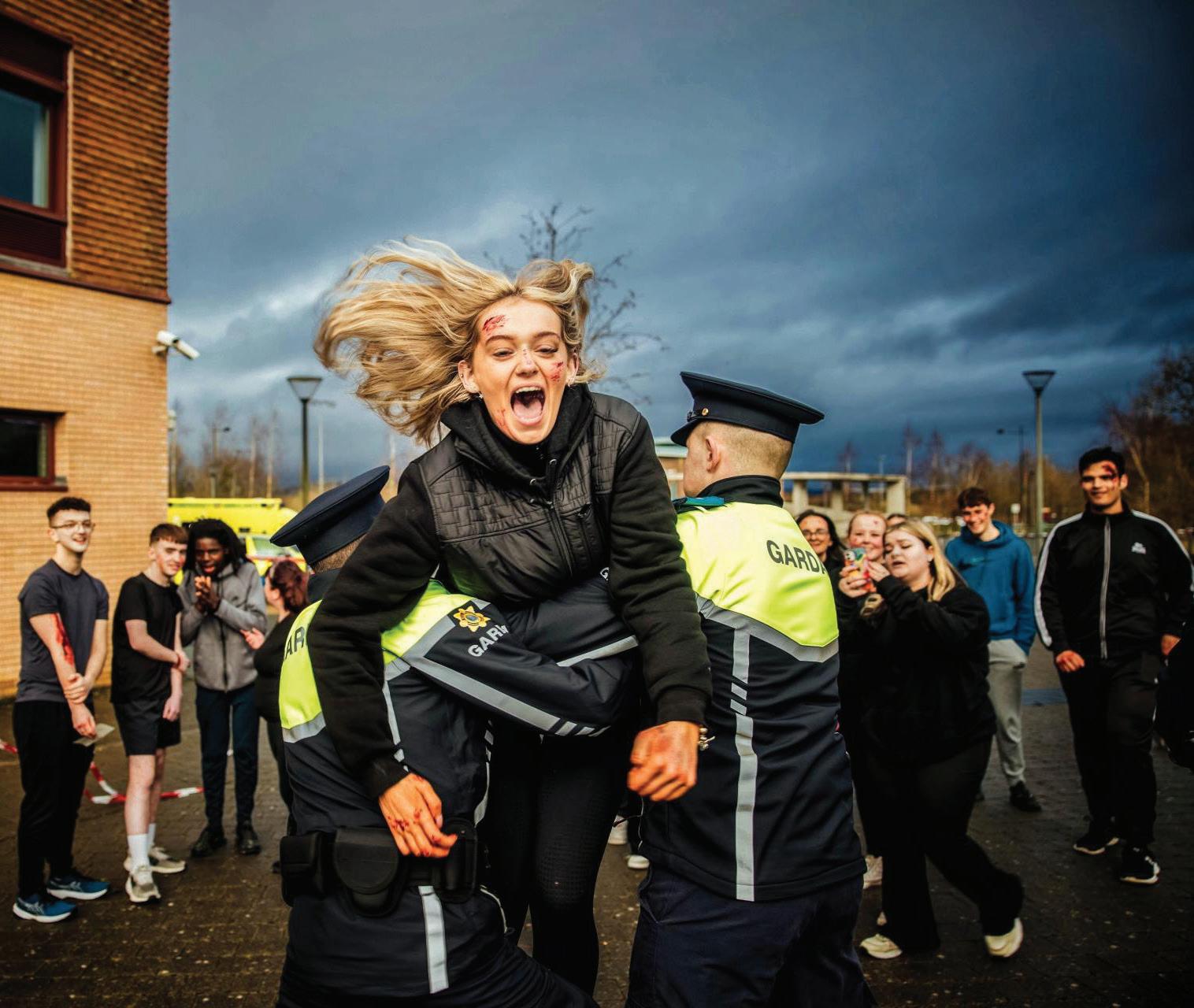
specialises in major incident training, described how the simulation is built around concept-based learning and bene tted both students and professionals alike.
“ is exercise gave those involved a drill in preparing and responding to an evolving emergency situation, action manoeuvres across di erent disaster locations, handling multiple casualties, dealing with a crime scene, and implementing a swiwater rescue,” he said.
“It gives the students the opportunity to gain exposure to life-changing situations. For the experienced professionals, it’s an opportunity to develop their skills under pressure.”
Professor Deirdre McGrath, Interim Executive Dean of the Faculty of Education and Health Sciences, added: “ e ability to collaborate and respond e ectively to emergencies is a crucial skillset that bene ts society as a whole. Simulations such as we have seen today can be highly e ective,
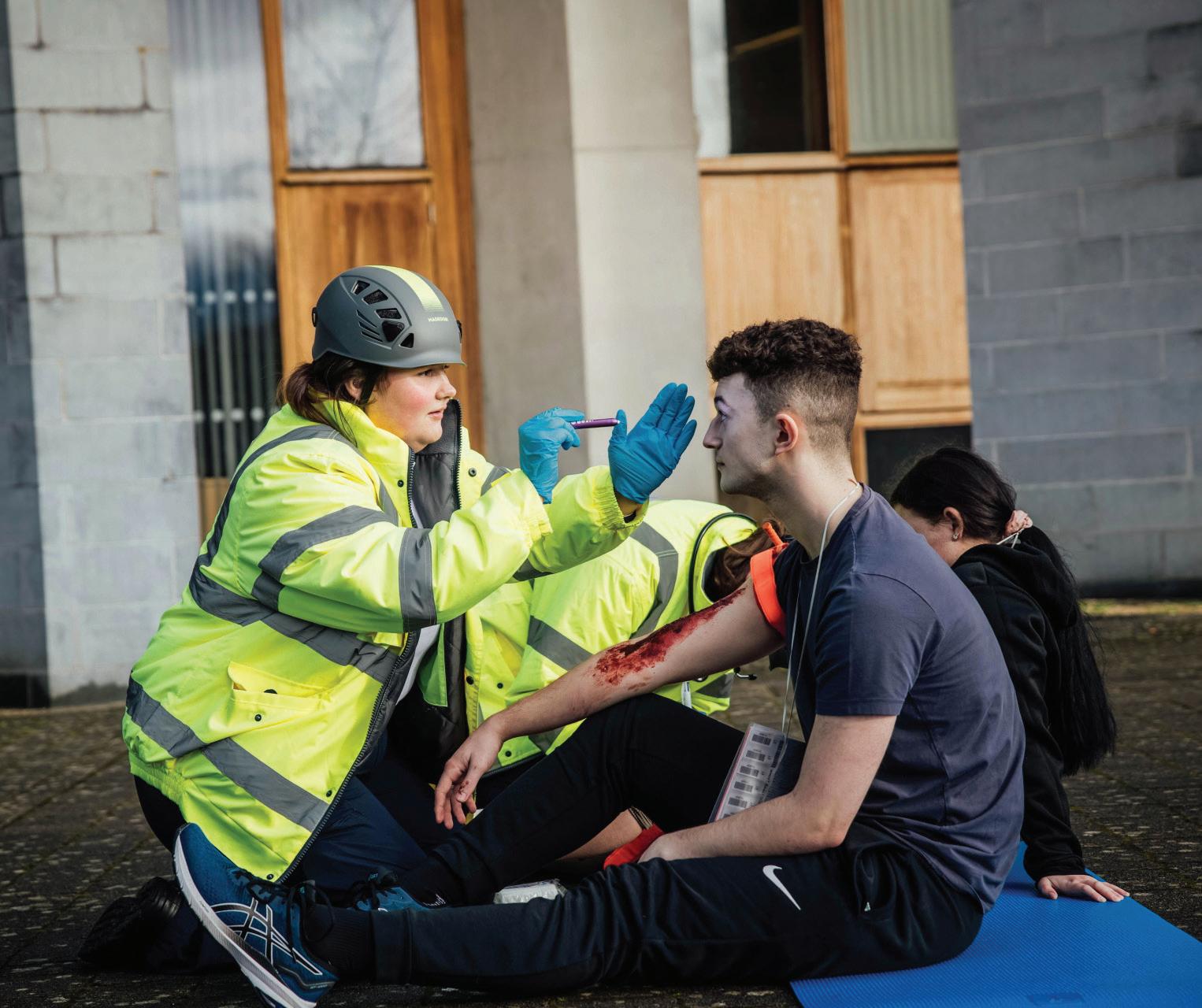

allowing participants, irrespective of their discipline and level of experience, to apply their knowledge and skills in a realistic setting without the actual risks involved.
“It is really wonderful to see education and emergency services coming together to create such a dynamic and immersive learning experience for all.”
Also present was a class of students from Carlow Institute of Further Education as part of the work for their own area of study in Special E ects Makeup, which made the sustained ‘injuries’ and overall incident even more realistic.


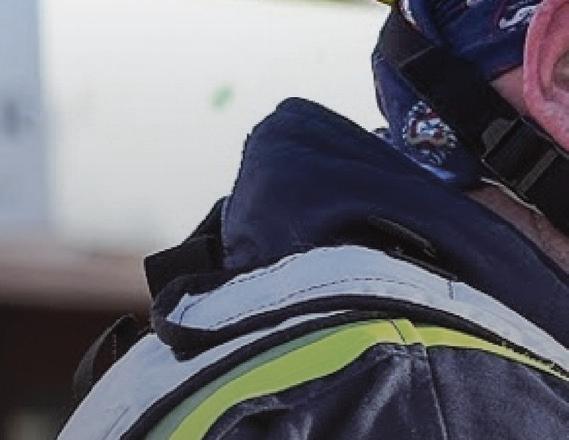




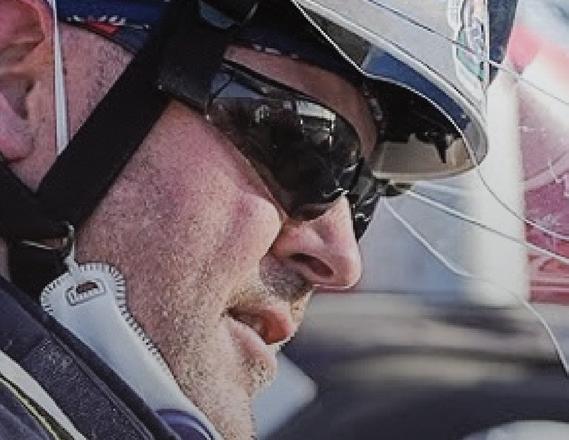






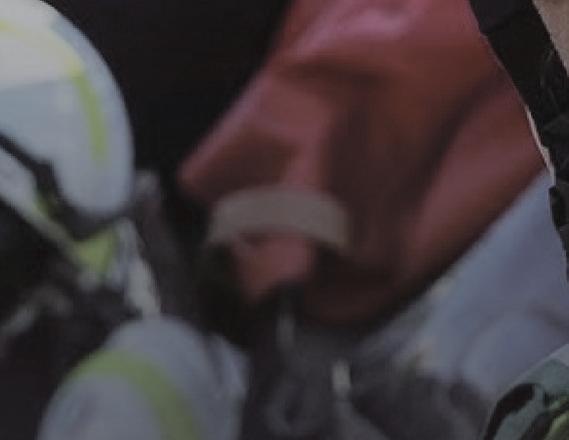




The DFB Extrication Team’s Participation in the World Rescue Challenge Helps Develop Essential Skillsets, writes FF/P Stephen Bonfil




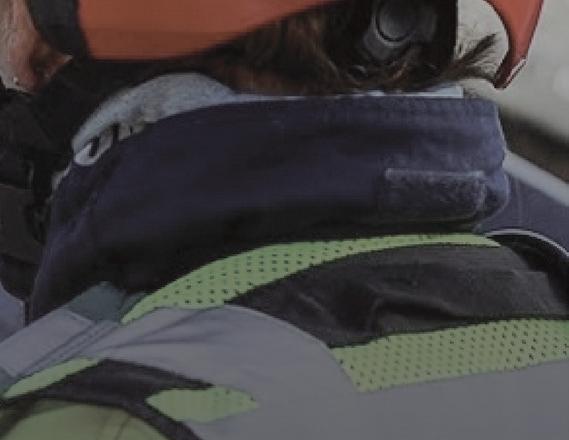
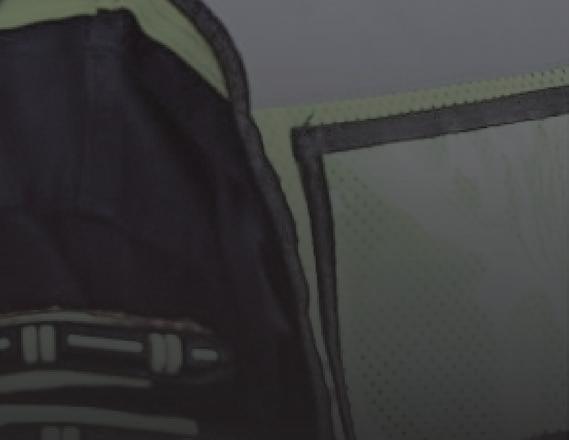





ith the recent increase in road accidents and road deaths in Ireland, it’s only right that DFB train and learn more, to be in possession of the best available equipment in the best hands. Our Dublin re ghters are intensifying their training e orts to ensure better preparedness.
District O cer Declan Rice, based at HQ, believes that, although our Dublin Fire ghter/Paramedics already provide a very high standard of immediate care at road tra c collisions, there’s always room for improvement.
RTCS


When you look at the numbers for the last few years, it makes for uncomfortable reading. By the end of October 2019, there had been 112 people killed on our roads, but in 2022 that rose to 121, and this year there have already been 155 at the time of writing. e world around us is constantly changing, and so too are the types of road tra c incidents we encounter. What have been the impacts of active travel, an aging population, introduction of new automatic electric vehicles, fast moving e-bikes and
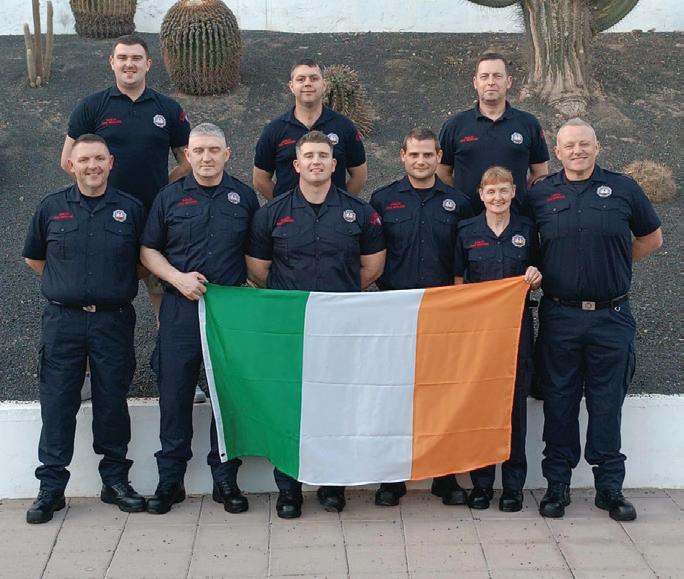
e-scooters, narrower roadways, and more one-way streets? Do these changes really make things safer, or is our environment actually making it more challenging to save the lives of our citizens when called upon? Our equipment, training and actions must adapt to this ever-changing environment.
In 2022, DFB had 2,230 mobilisations to RTC incidents. is accounts for 16.5% of all re appliance activity. Over the past number of years, there has been a slow move away from the “don’t move the neck, take the roof o ” approach, to a more holistic patient-focused extrication. is is something our Fire-EMS service has embraced and continually moves to give the best international standard of care. No longer do we request our APs on scene for a spinal rule-out, as all our Paramedics now adopt the spinal rule-in approach.
Over the past ve years there has also been a steady move to battery operated hydraulic tools, and more use of small tools such as ratchet straps, impact drivers and powerful reciprocating saws with stronger blades.

A lot of this work has been initiated through collaborations with external agencies such as An Garda Síochána, the Road Safety Authority and Rescue Organisation Ireland. Our National RTC and HGV instructors have been working with di erent counties to establish national SOGs. An internal team has also been established to assess the impact of vehicles using alternative fuels. Most recently, DFB is developing change from the ground up by having our re ghters competing on the international stage and informing us of international best practice. In October, the DFB Extrication Team travelled to Spain for the World Rescue Challenge to do just that.
DFB started competing in the National RTC Challenge in 2008. Earlier this year, a er competing against extrication teams from across the country, our RTC Extrication Team quali ed to represent Ireland in Lanzarote. is is only the second time a DFB team have quali ed for the World Rescue Challenge.
e World Extrication Challenge brings together emergency professionals from around the globe, in order to enhance their skills in

e ective post-crash intervention. e Challenge brings lots of travel, fun nights out and the usual re ghter wind-ups, slagging and craic. But fundamentally, what this competition is really about is challenging ourselves, exchanging knowledge with others, and setting best international standards. We are then in a better position to help the citizens of Dublin.
is year for the challenge, we had a travelling party of ten, from seven stations across Dublin. e competing team itself is designed to replicate a crew from an appliance. Our Incident
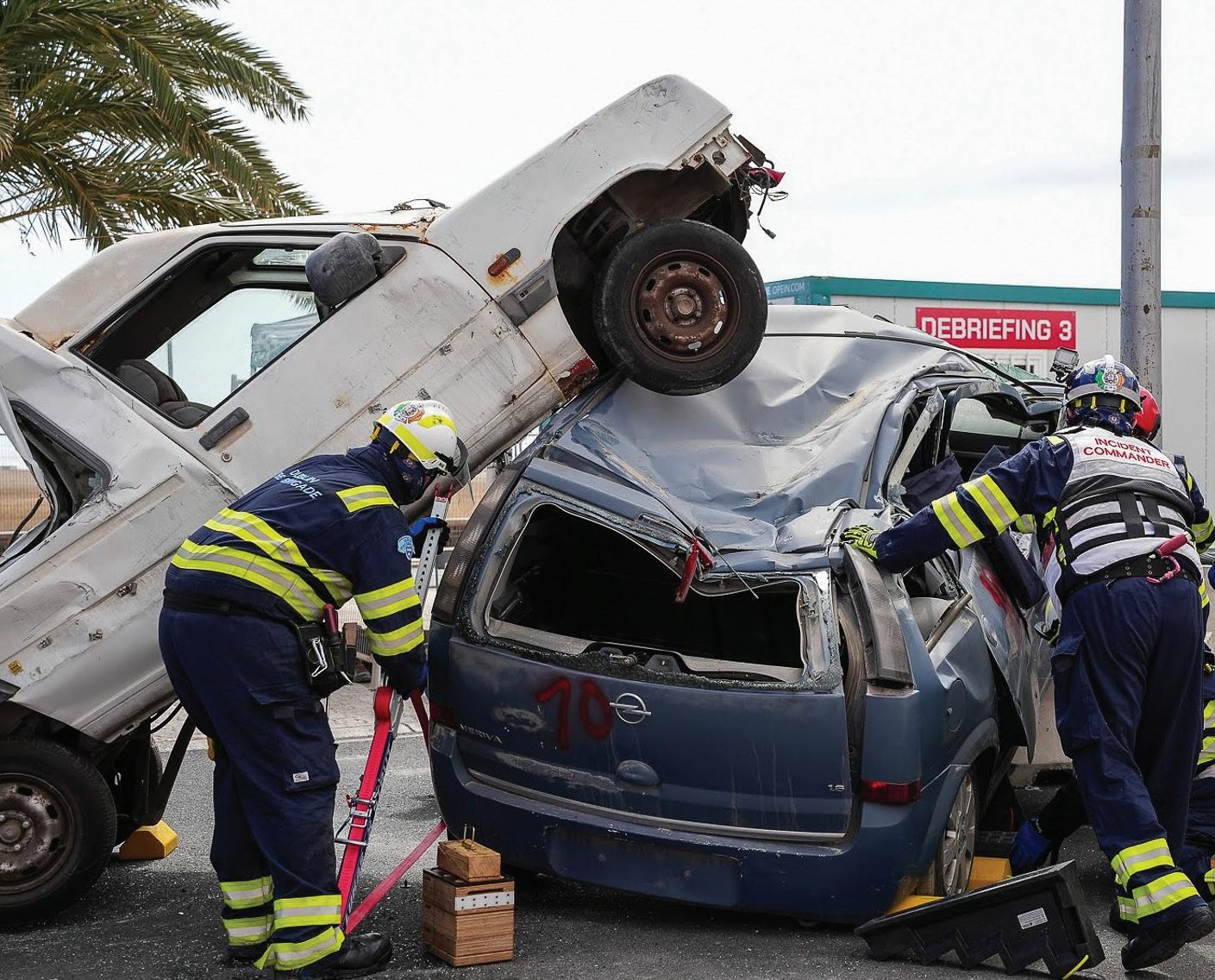
Commander (FF/P Keith Russell) takes charge of the incident and directs the operations. ree RTC Technicians (myself, Liam Ca rey and Dave Lorenzo) are on the tools to make space for the safe and e cient extrication of the injured. Finally, two Team Medics (Eithne Scully and Paul Stanley) assess, prioritise and treat the injured and sometimes trapped patients. New techniques and learnings can now be brought back to their colleagues and help further raise standards throughout DFB.
e event in Lanzarote was very well run and truly memorable. e opening ceremony was held in an amphitheatre in an old hollowed lava ow tunnel with music, dancing and synchronised swimmers putting on a show in the
“
DFB IS DEVELOPING CHANGE FROM THE GROUND UP BY HAVING OUR FIREFIGHTERS COMPETING ON THE INTERNATIONAL STAGE AND INFORMING US OF INTERNATIONAL BEST PRACTICE”
pool. A Fire ghter “swap-night” saw a free bar with nibbles and two huge energetic drums bands that really got the party going, (along with the Pálinka shots from the Romanian team).
e competition side of things occurred over four days, with each international team competing three times. A well-deserved rest day was needed a er a “Team Ireland” gathering on the previous night, where DFB were joined by Carlow Fire Service, three Civil Defence teams
and the Rescue Organisation Ireland volunteers. e closing ceremony in the centre of the island brought more traditional music and dance performances, and a splendid meal before the results were revealed.
So how did our team perform? e Medics were placed 4th overall in Tier 3, and the Technical Extrication Team were placed in 5th position in Tier 2. us was a very strong performance against 36 international teams from Europe, the United States, South America, Dubai, South
Africa, and many more.
Whilst this World Rescue Challenge is a signi cant training event, with more than 600 visitors, it also provides a great boost to the local economy and tourism sector. Rescue Organisation Ireland, who run the Irish National quali ers, are hoping to be successful in winning their bid for Ireland to host the event in 2028.
D/O Declan Rice tells us that it has become apparent that many individual skillsets are needed to make a successful RTC team. In the months leading up to this challenge, we received great support from across DFB that we are very grateful for. Lots of new members gave up their time to assist with scenario set-up, as forkli operators, scenario assessors and nally knowledgeable patients within the cars requiring to be extricated.
Our DFB RTC team is steadily growing and its members can be regularly seen in the Training Centre training in the RTC compound. rough their development, they are becoming well-known throughout our organisation, and as subject matter experts at station level.
A word of thanks and acknowledgement must also be given to the CFO, the BTO, ABTO and OBI stores sta for their work in helping facilitate this ongoing training. A huge thanks also to the Logistics Team in Stanley Street for their interest and the new equipment and PPE they source for the team to assess and use.
e RTC Team are always looking for new members, so if you’d like to get involved in 2024, contact any of the current team members for a chat, or keep an eye on their social media page “DFBEXT” on Instagram for further information.
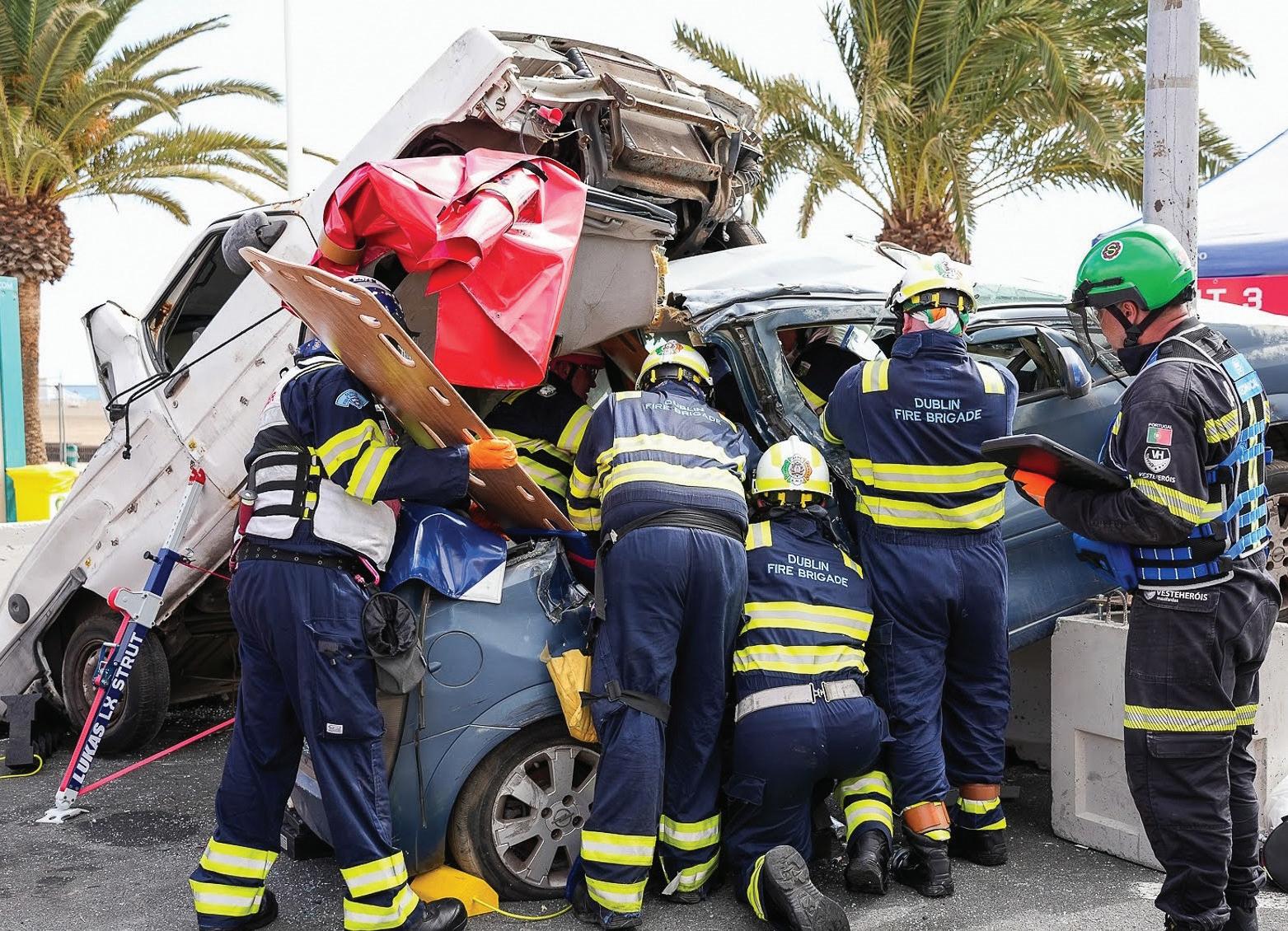









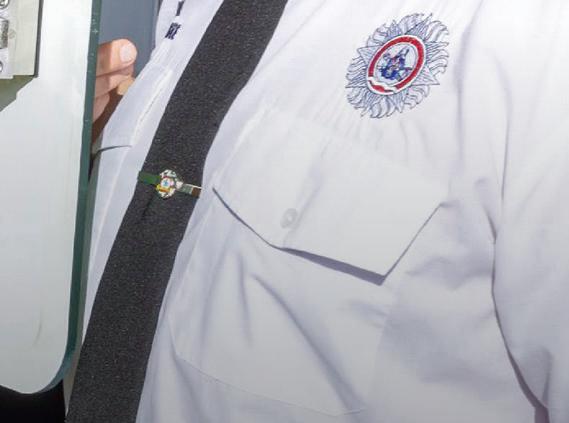
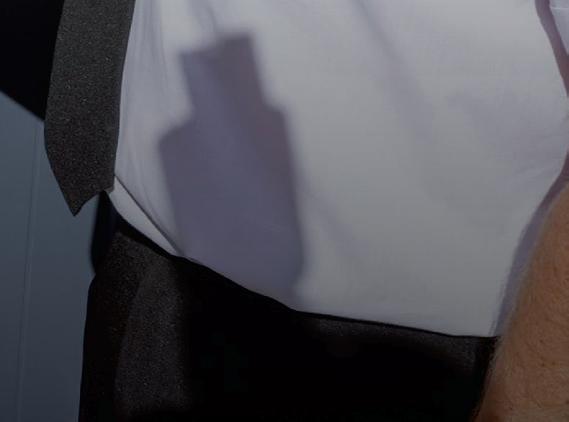



On 16 October last year, ttingly ‘Restart a Heart Day’, Dublin Fire Brigade unveiled 14 new Public Access Automatic External De brillators located prominently outside each of its re stations across the city and county.
is signi cant initiative to enhance community safety by providing immediate assistance during critical moments when



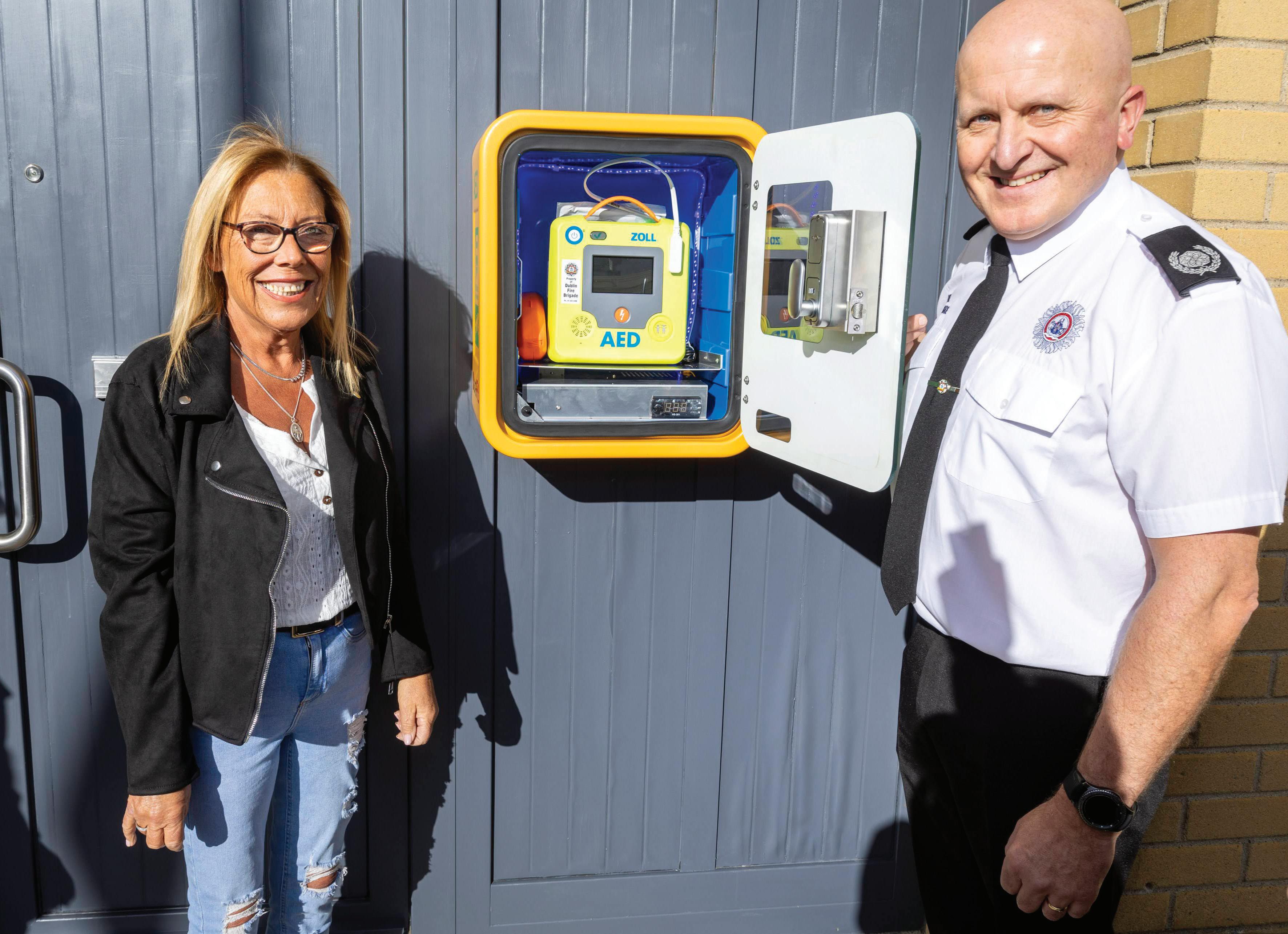
An Unexpected Incident Led to the New Initiative for Dublin Fire Brigade, D/O John McNally and FF/P John Leckey tell Adam Hyland
every second counts in a medical emergency, was a necessary step forward, with the launch attended by DFB personnel, Lord Mayor Daithí de Róiste, and one very special guest whose own medical emergency prompted DFB to decide to install these life-saving devices in places where the public can access them when needed.
In January of 2023, Pauline Ryan was being driven through Finglas by her sister when she su ered a
cardiac arrest. Despite the frightening situation, Pauline’s sister had the presence of mind to pull into Finglas re station in search of help. e re appliance and ambulance were both at another cardiac arrest callout, with all the station’s medical equipment, but D/O John McNally and FF/P John Leckey were fortunately still there, and performed CPR until the arrival of colleagues from Phibsboro Fire Station, who were able to successfully de brillate and resuscitate Pauline.

D/O John McNally gives his account: “It was a Sunday morning and both the re appliance and ambulance were out on calls, leaving myself and our mess man John Leckey at the station,” he tells me. “He was preparing dinner for the day when there was a frantic knock on the door of the station.
“I looked out and saw a woman in distress, so we both went downstairs and opened the door to nd another woman slumped over in the passenger seat of the car. We assessed her and saw that she was in cardiac arrest, with no pulse, so FF/P Leckey started to perform CPR immediately while I went back into the o ce to phone for another ambulance.
“We had basic equipment, so we were able to get an airway and applied a Bag Valve Mask, and continued to perform CPR until the ambulance and re engine from Phibsboro arrived and their crew gave vital assistance. e de brillator was applied and advanced paramedic Declan Byrne performed procedures until we got a return of spontaneous circulation and the woman was taken to hospital.”
FF/P Leckey also recalls the
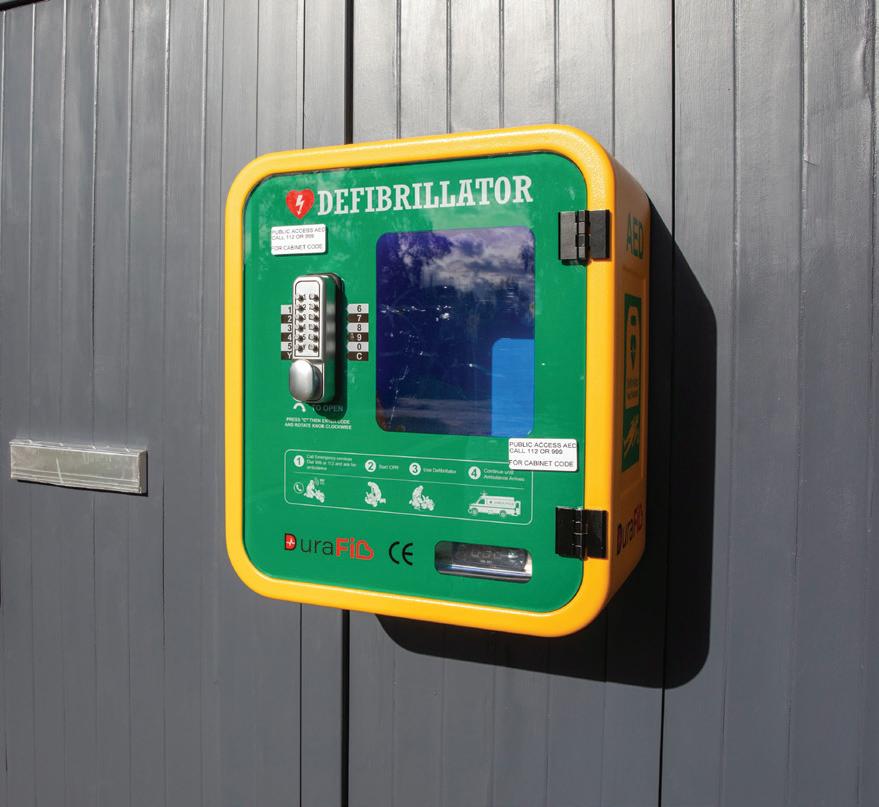

incident vividly.
“ e car pulled up at the station and a woman hammered on the door,” he says. “Myself and D/O McNally approached the woman in the passenger seat, did a pulse check and found there wasn’t one, and while D/O McNally made the call to mobilise advanced medical care, I did chest compressions and rescue breaths.
“ ere was still no output a er a few minutes, and when D/O McNally came back out he took over the rescue breaths while I continued chest compressions until the Phibsboro ambulance arrived. We
were performing CPR for about 15 minutes before they took over.”
When I ask if this was a bit of a change of plans from what he was initially tasked with that day, FF/P Leckey gives a typically wry reply: “Well, the dinner nearly got burnt!” he says. “I can’t remember what it was I was cooking, but I’m sure it was something exquisite!”
As D/O McNally tells me, usually when the patient is brought to hospital the DFB personnel who treated them hears nothing more about it, but serendipity stepped in.
“ e woman, who we later found out was called Pauline Ryan, happened to be doing a rehabilitation course a er her cardiac arrest and she was talking to someone with a connection to DFB, and that is how we were able to nd out who she was. Other than that, we would never have known who she was, and thankfully because we did know, we were able to invite her to the launch of the de brillators.
“DFB actually managed to get in touch with and invite other survivors of cardiac arrest to the launches at di erent stations, so it was great to be able to see the faces of those who were saved, because that gives DFB personnel great satisfaction.”
At the launch itself, which understandably had its main event at Finglas Fire Station, D/O McNally was pleased to meet Pauline again. “I approached her and introduced myself as one of the people who had treated her that day,” he tells me, “and she got very emotional, as did her sister. She had no recollection of the events, or the day at all, which is normal for people who su er a cardiac arrest, but she obviously knew the seriousness of what had happened.
“ e key thing is that her sister had the presence of mind to go to us, and luckily enough myself and FF/P Leckey were there, and are obviously experienced and trained in CPR, and even though we didn’t have the full equipment at hand, we were able to keep her brain oxygenated until the de brillator and ambulance arrived.
“I explained to Pauline that there was a chain of events that made sure her chances of survival increased, and she realised how lucky she was that her sister brought her to us, that we were here, that we could get an advanced paramedic out quickly and get her to hospital, and she was very thankful for it, but it was important

to point out that her sister was of equal importance in that chain of events.”
Following the incident itself, it was D/O McNally who set the initiative in motion to have public access de brillators at every station, but it all started with a request to have one at Finglas Fire Station.
“Saving lives is something we do all the time, but normally when we go to incidents we have the resources with us, and in this situation we didn’t, so we could only do what we could, so it was important to put in the call to make sure we recti ed that as soon as possible,” he says.
“It was great to be involved from the initial incident up to the launch, but in the end, we were just doing our job, and the main thing is that Pauline survived,” he adds. “I sent in a corrective action form looking for a de brillator for ourselves, but we needed to think bigger, and that is where the Public Access De brillator
plan came in, because it was deemed important to have one publicly available at every re station. ey are outside, clearly marked, lit up, and very accessible 24/7, which is great for the community.”
e overall initiative aligns with Dublin Fire Briagde’s dedication to proactive community engagement and safety, “aiming to bridge the gap between emergency services and the public by fostering a sense of unity and cooperation”, and for FF/P Leckey, the installation of these Public Access De brillators is crucial to this.
“Speaking personally, in my 28 years at Finglas Fire Station, we have had quite a few people knocking on the door, whether it is with a sick child or a serious injury, and if it does escalate to cardiac arrest, until now we have had no response if the ambulance and appliance are out, so it is great to have the resources now, a great thing for us and a great thing for the community to have. Hopefully we will never have to use it, but it is good that it is there.”




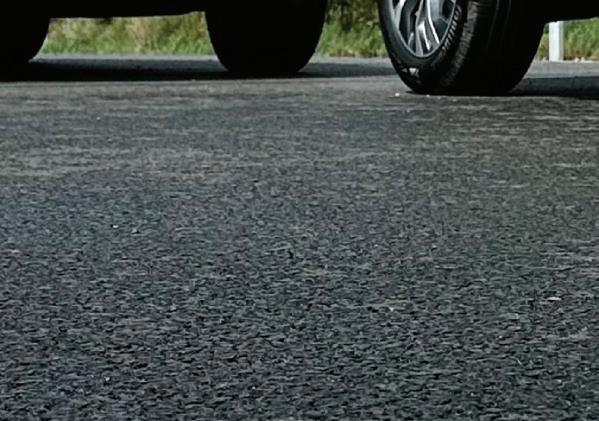
ROOTS
is gave the charity, renamed CRITICAL last year, the opportunity to “go back to our roots”, as Edward Walsh, Operations and Standards Manager, tells me. He was on the very rst shi on the Air Ambulance and worked on it for four years, having previously worked as a paramedic for the NAS.
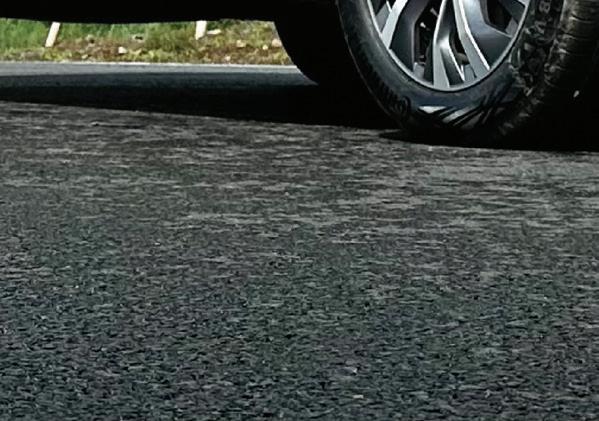






“It served a great purpose to the community and touched many lives, but each mission cost around €3,500, which required a lot of funding that we as a charity had to raise,” Edward explains, “and we decided that we wanted to change our service and develop more of a community initiative.

very second counts in a medical emergency, with a person who su ers a cardiac arrest seeing their chances of survival decrease by 10% for every minute that elapses without receiving treatment. Despite best e orts, it is not always possible for an ambulance to get to the scene of such an emergency quickly, especially in rural areas, but with the great work of the aptly-named CRITICAL charity, a growing network of fully-trained community rst responders
(CFRs) is being built to help deliver crucial treatment to patients before an ambulance arrives.
Established in 2009 as Irish Community Rapid Response, the charity launched Ireland’s rst and only Air Ambulance in 2019, responding to more than 600 serious incidents and emergencies every year in the Munster region and surrounding areas. In March 2023, the Government made the service a Health Service Executive commodity owned by the National Ambulance Service.
“We now have 13 doctors on the road, from Donegal to Cork and from Mayo to Dublin, but we are also expanding into community rst responder schemes, so our footprint across the country is growing at a nice rate.”
All CRITICAL members act in a voluntary capacity, but the cost of putting rst responders on the road is expensive, and the charity is still heavily reliant on donations, with a basic life support bag containing a de brillator and other equipment issued to volunteers costing €1,500.
“To put one of our advanced care doctors on the road costs between

€20,000 and €30,000, but to have a critical care doctor on the road, where we supply a rapid response vehicle and equipment to critical care standards, can range from €120,000 to €130,000,” Edward adds.
“We will always support our doctors, but we see our CFR groups as equally important, and we need donations to continue that service, to show people it is crucial and that it works.”
In this regard, CRITICAL works to establish, support and nance CFR groups around the country that would otherwise struggle to get o the ground, by acting as a sort of umbrella organisation, and in doing so, have created a vast network of people who can be called upon to treat patients in need of urgent treatment.
“A lot of groups in villages and small towns nd it hard to nd funding every year,” Edward tells me, “but when you have a national charity such as ourselves, we can provide the extra backing. We call it the CRITICAL banner. ere are around 600 townlands in the country without any sort of CFR group, so there is an opportunity there to help keep many more communities safe.
“We can assist with nances, admin,

and we have our own internal governance so we can take away a lot of the di culties of setting things up, working with groups to initialise fundraising and events.
“We frontload groups to get going and we never look for that money back. When they are ready to go fundraising, with our help they already have a presence in the area, so people are more aware of their existence.”
A major development for CRITICAL was the launch of a partnership with the NAS last year, which sees o -duty NAS sta volunteering to work as CFRs in their community as part of the NAS Sta ODuty Response Scheme, with the charity providing them with the life support bags they will need when called out to a medical emergency. e aim is to have a network of volunteer emergency medical responders in every county within the next year, and with the addition of NAS paramedics – initially 150 personnelthe likelihood of achieving this is more realistic than ever.
“To tap into the NAS is great for us, because we get the expertise for emergency medical conditions right up to advanced paramedic level,” Edward says. “It is very hard to get that expertise
ordinarily, so it is a big milestone for us.”
CRITICAL issued the rst 50 life support bags at the end of 2023, and they immediately saw a growing interest in their CFR scheme.
“ is partnership shows that we don’t want to just sit back and rely on our 13 doctors around the country, we want to make our footprint as large as possible, and using members from the NAS who are the primary response agency in Ireland is fantastic,” Edward says. “If we can support them by giving each of them a basic life support bag they can keep in their car, that asset is great for us.”
As well as the network of NAS personnel now working with CRITICAL, the charity is also continuing to work hard to establish CFR schemes around Ireland.
“We don’t want to sit back and wait for people to pass away before a community realises a CFR group is important,” Edward tells me, “because our initiative is community-based, so we are reaching out and letting them know what we are all about. Our motto is ‘empowering communities to save lives’ and we are doing just that.”
Edward tells me that the night before we talked, he took time out of his own

schedule to train members of his local GAA club in rst aid.
“ is was 24 people who only ever looked at the de brillator on their way in the door, so I showed them how to use it properly, because it is about making people aware, and I’m happier knowing that in my community there are at least 24 more people who know how to do CPR.”
e rst CRITICAL CFR scheme was established in Newcastle West in Limerick last September, and by mid-February they had already responded to more than 60 taskings.
Sean Horgan, an advanced paramedic and NAS Shi Manager, was behind establishing this group, and says there was a certain element of serendipity to his getting involved.
“I had volunteered to assist as a paramedic at a CRITICAL fundraising event, and got talking to Edward, who told me they were looking to expand into the CFR network and start groups, and it just so happened that I was already in talks with the NAS about setting
up a group in West Limerick. So CRITICAL were looking to form a group, and I was looking for one, and they were happy to make ours in West Limerick their rst one.”
For him, working with CRITICAL made establishing his CFR group so much easier.
“I had been involved in CFR groups before, and the set up can be quite slow, but when we approached CRITICAL, from the initial talks to getting up and running, having the life support bags in the car and getting text alerts from the NAS, was just six weeks, so it was extremely fast.”
He explains how the voluntary response system works within his CFR group.
“When the call goes into ambulance control, the system identi es if the call is within our remit of West Limerick, and if one of the chief complaints is chest pain, cardiac arrest, stroke or choking, an automatic text will go to all members within our group.
“Whoever is available will send a text back to the NAS, which will log that we are responding, so they can tell whoever
is on the phone, as well as the responding ambulance, that there is a CFR on the way. We will usually contact the NAS control centre while on the way to get any further information – where the other resources are coming from, whether we will be rst on the scene, is there CPR ongoing – and when we arrive, we send another text to ag that we have arrived, and treat the patient as we would if we were on the ambulance.
“To have that early hands-on-the-chest treatment for a patient in cardiac arrest, or to treat a patient with chest pains who might deteriorate, is so important, and to have everything I need in the bag ready to go, is vital.”
For Sean, getting the chance to treat patients is something he looks forward to.
“As a Shi Manager with NAS, my role is di erent, but I get a lot of satisfaction out of getting to do paramedic work, to be able to go out in my own community and assist a patient. I think you will nd that anybody in the ambulance service, when they go into management, all miss that hands-on care of the patient. at is why we do things like this, volunteering when
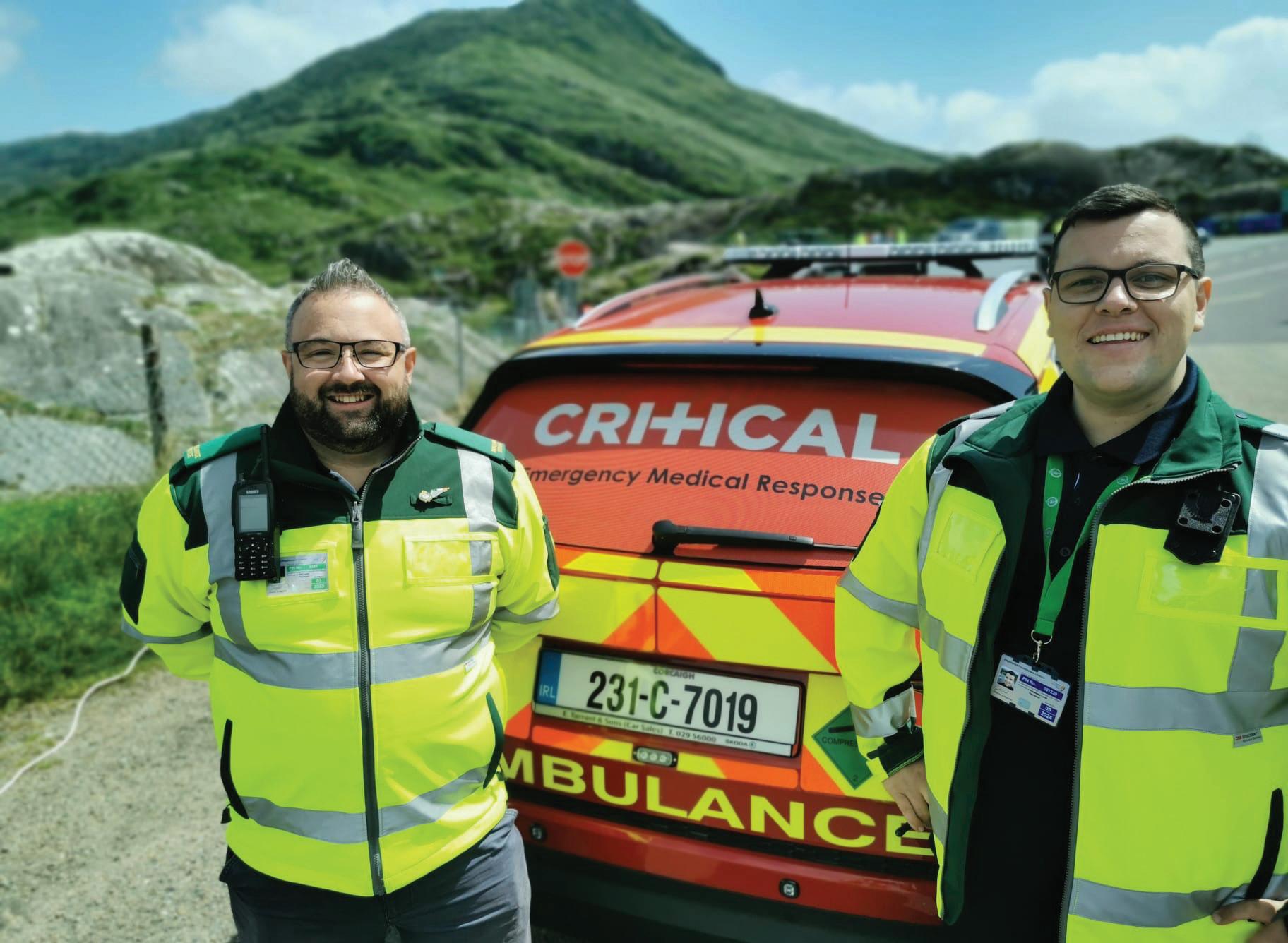
o duty, because that is ultimately what drove us to join the ambulance service in the rst place.”
With around 240 responses expected over the course of the year, the West Limerick CFR group is kept busy.
“Even though we just started in September, the area we cover is quite large, so the calls do come in thick and fast,” Sean says. “Of course, our volunteers have to be at home or nearby to be able to go to a call out,” Edward adds, “and from June of last year we have had about 800 calls across our responder scheme in collaboration with the NAS, our doctors, and the CFR scheme in Newcastle West. So, we are busy!”
In order to keep up the supply of equipment to the growing network of rst responders, CRITICAL not only relies on donations, but also partnerships with companies that share the same ethos, such as a recent collaboration with Canada Life.
“Partnerships are the bread and butter for us to make a bigger impact,” explains Edward. “Canada Life’s motto is ‘to reduce the risk of death by empowering communities’ so it matches very well with our own. ey have signed up to a three-year partnership to donate €15,000 each year, sponsoring ten of the basic life support bags every year, so that is 30 more bags on our radar, and it means we can frontload CFR groups with the equipment
they need, and those people can go out and perform life-saving treatment on a patient until an ambulance arrives.
“Ambulance services do a great job, but if we can add an extra layer of help, to work alongside the NAS, the re services, the gardaí, that is fantastic.”
e ability to put more fully-equipped volunteers into the community also means the CRITICAL name and brand is becoming more prevalent, and this raises more awareness about the importance of CFR groups and early pre-hospital treatment of patients.
“When one of us walks into a scene with a yellow CRITICAL jacket on, people become aware of us, and in Ireland the best way to spread information is still word of mouth,” Edwards says. “ is leads to that bigger footprint and larger volunteer network because people want to get involved. e family of a patient knows there is a community-based initiative out there helping to save lives, and word spreads, they will tell a neighbour who then donates, and so on.
“It’s about branding, and having the right people, training them to the right skill level to deal with medical emergencies, and CRITICAL giving them the backing to do so. CFR schemes are so important because there is so much that can be done before an ambulance arrives. ey are a massive

asset, to us, and de nitely to the NAS. We see the importance of having them, so we are going to assist them the best we can, and get as many of them as we can across the country to help save as many lives as possible.”
Anybody interested in volunteering, or setting up a CFR group in their community, can contact the CRITICAL Donor Care O cer at info@criticalcharity.ie
To donate, scan the QR code:





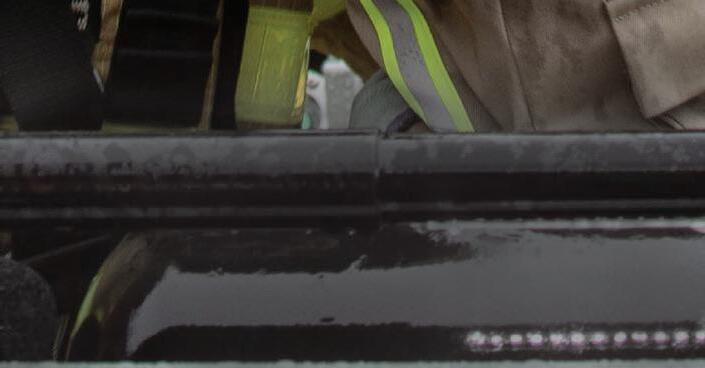
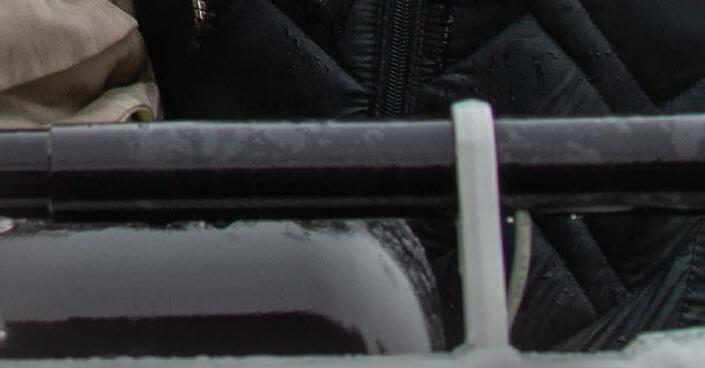



DFB has formed a partnership with Oscar’s Kids, the charity creating precious memories for terminally ill children and their families
Dublin Fire Brigade has always been open to making cherished memories for visiting children excited to climb into a re engine or work a hose, and in September this commitment to community was made o cial with the launch of a partnership with the Oscar’s Kids charity.
Oscar’s Kids was founded by Dublin couple Yavanna and Lar Keogh in 2019 in honour of their three-year-old son
Oscar who was diagnosed with DIPG, a rare and terminal form of paediatric brain tumour. ey set out to make it possible for terminally ill children and their families to create positive memories in any way they can while they still can.
In a moment of serendipity, earlier this year, FF/P Stephen Cleary of A Watch HQ was talking to a colleague about the Garda charity little Blue Heroes, and from there the relationship with Oscar’s Kids was born.
“I was asked if we did anything similar to Little Blue Heroes, which we didn’t at the time,” FF/P Cleary says, “so I looked into what they do and how much it means to families to have the distraction of a special day and the memories that are made for terminally ill children and their families.”
He wrote up a proposal discussing the possibility of Dublin Fire Brigade starting their own initiative and gave it to A/C/F/O Greg O’Dwyer, who was intrigued by the idea and put it to the HR department and CFO Dennis Keeley.
As it happened, Elaine O’Flaherty in HR was already aware of the Oscar’s Kids charity.
“Yavanna Keogh had a page on Instagram reviewing beauty products that I followed,” she explains, “but I saw that her page had changed and was now all about the journey her family had been on with their son Oscar, and I was amazed at how positive they were and the great work they were involved in.
“When Stephen came up with the idea, we were thinking of organisations we could work with and what we could do with them, and I suggested Oscar’s Kids because they are a Dublin couple, we are Dublin Fire


“THE IDEA WAS ALL ABOUT MAKING MEMORIES FOR TERMINALLY ILL CHILDREN AND THEIR FAMILIES, TRYING TO GIVE THEM AN EXPERIENCE, AND MAKING THEM HONOURABLE FIREFIGHTERS”
children, but also their parents and siblings. ey get to remember a good day out with their sibling who is unfortunately very unwell.”
“ e idea was all about making memories for terminally ill children and their families, trying to give them an experience, and making them honourable re ghters,” FF/P Cleary adds.
Brigade, and they do such amazing things for children. ey send them lego, bring them in limos to Smyths for the day, create amazing experiences, so I thought they would be a very good t for us.”
“When Elaine mentioned Oscar’s Kids, it was a perfect t with what we were trying to do,” agrees FF/P Cleary.
“We’ve done this kind of thing informally on many occasions for Make a Wish and from our own community outreach, with ill children coming into our stations,” A/C/F/O O’Dwyer says, “and it has always been very upli ing for everybody involved – not just the families and children, but also for the crews who love doing this. ey are brilliant, and go out of their way to make children feel special, and the children have a lasting positive memory to take away. But it goes beyond that because it is not just for the
“I wrote to Yavanna and Lar Keogh outlining that their work is something we’d like to be involved with on a more formal basis, to identify with one particular charity and focus on that,” says A/C/F/O O’Dwyer.
“An initial Teams meeting introduced us to them and gave them the information they needed about us, and following that they came to HQ to see us,” says Elaine. “A/C/F/O O’Dwyer gave them a tour, and they said they were delighted that we had contacted them, and they too thought it was a really good t.”
“When we brought them in and met them, we knew immediately that they were the right partnership, and we took it from there,” A/C/F/O O’Dwyer says. “What sold it for me was just going on their website and Facebook pages, and their story would absolutely break your heart.”
e partnership was quickly formed,
with Yavanna and Lar contacting DFB with details of seriously ill children who have an interest in the re service. DFB then organise to bring the family to their local station, or the Training Centre, or if they are too ill to travel, have a crew visit them at home or at a medical facility.
In honour of Oscar, Oscar District was formed to accompany the DFB’s current districts.
“We explained the whole concept of the seniority of badge numbers to Yav and Lar and they thought it was a great idea,” says A/C/F/O O’Dwyer. “Badge Number 1 went to Oscar himself. As well as the goodies they get the cert, the badge number, and that is very important for the families a erwards, that they still have that memory of the cert and the fact that their child was an honorary member of DFB. ey also get the Oscar Coin, which has been specially commissioned. It is part of our identi cation with the charity to have the Oscar name.”
e feedback and support that has come in from DFB members, friends and businesses has been phenomenal.
“Every single person we have been in touch with has delivered 110%,” A/C/F/O O’Dwyer

says. “Everybody is fully behind it. e Chief gave his backing, the crews are lining up to volunteer to come in and help out on their days o , they are donating things themselves, contacting friends of theirs in businesses to get sponsorship.”
“ e feedback was great, a very good response,” FF/P Cleary agrees. “People o ered to do a lot of things to help make the day memorable for the children and their families.”
e partnership was o cially launched in September during Child Cancer Awareness Month, and though the weather was awful, everybody came away from the day with great memories.
“Originally the plan was for ve children to come down to us for the launch but unfortunately one of them, Michael, was too ill to come so we sent a pack out to him in advance and we made him Badge No.2,” says FF/P Cleary.
“On the morning of the launch at the Training Centre, CFO Keeley opened the ceremony and invited the children to come up and get a certi cate and goodie bag. e children got to interact with the re ghters who were there, a couple of them went on the ladder, they got to spray the hose, drive around on a re engine, making great memories. Lar and Yav also said a few words about how important it was to look out for the children and how happy they were to form the partnership.”
“
ings can happen very quickly in these situations, and we wanted to organise the launch quickly because time can be a factor.,” Elaine says. “Michael, who couldn’t come that day, has sadly passed away since. You are trying to be sensitive to families and children, and sometimes you don’t really know just how ill the children are and what kind of accommodations you need to have in place.
“We spoke to a nurse in Temple Street Hospital who is on the board of directors for Oscar’s Kids, and she said not to worry about saying the wrong thing, to just treat these children as children.
“People really got on board with sponsors, reaching out to businesses, DFBSSC gave us Smyths vouchers and sponsored the balloons, companies who deal with our logistics department gave us things such as t-shirts, mini re engines, we made phenomenal goodie bags for the day. We had sweets, cake, one of our re ghters owns Fire House Pizza and he supplied a range of great food. It was all about making it as special as we could. Anybody who has any type of skill or connection wanted to be involved, and continues to show that, and I have to say that as someone from the admin side, I have been blown away by the determination of the re ghters to get involved.”
“We need to thank everybody for their support. I can’t stress that enough how amazing they are” A/C/F/O O’Dwyer adds.

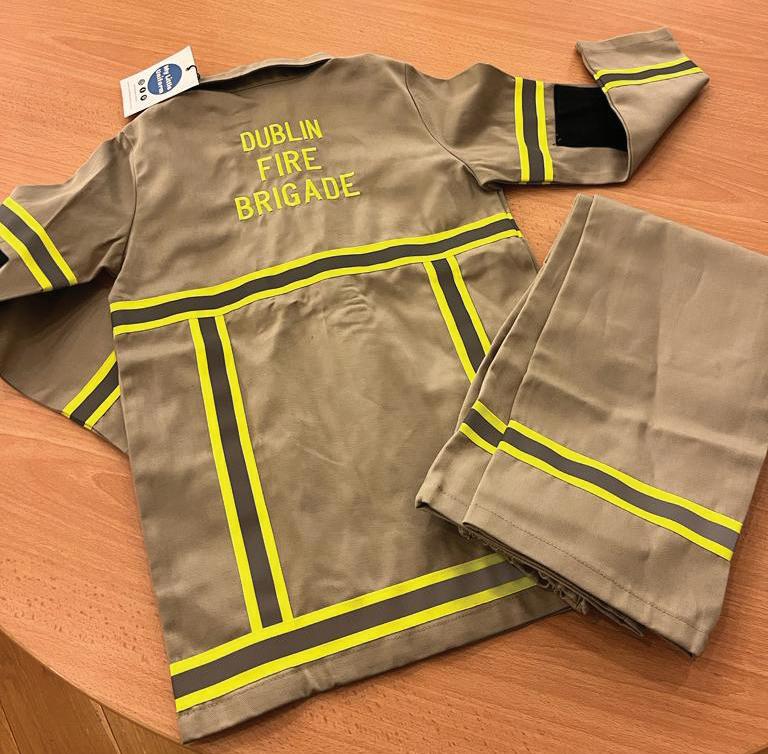
“As a day, the atmosphere at the launch was just phenomenal and we got amazing feedback from the families,” Elaine says. “ ey thought they were just coming for a few photos, so it was a great surprise and created great memories. And it wasn’t just for ill children, because one of the families were a bereaved family who came along to see us give their child an honorary membership. It is not just about the children who are sick, it is about the families and the bereaved families as well.”
Oscar’s Kids already has a waiting list of families who would like a special day with DFB, and as A/C/F/O O’Dwyer says: “We will do whatever it takes. It all depends on each child’s capabilities, and there is a fast turnaround, but we are well able to manage it, we are determined to make it work and make memories as special as possible for every family.”














Leave behind a little magic! Let your legacy bring magic to the lives of children living with serious illness. A gift in your will whether it is a large or small sum, or a percentage of your estate will make a lasting di erence.













Barretstown o ers free speci cally designed camps and programmes for sick children and their families. When looking after your loved ones in your will you can also transform the lives of sick children for generations to come.
We can help you succeed in making this gift.



For more information, please contact Clare Martin on 045 864 115, email clare.martin@barretstown.org or ll out this slip and return by post to the address below.
Yes, please send me a free brochure
Name:





Your care and compassion for others can live on through a legacy gift. By remembering Barretstown in your will you can make sure that every child with serious illness can experience the magic of camp.







Healing doesn’t just happen in hospitals and laughter may very well be the best medicine.

Barretstown Founder, Paul Newman

Registered Charity Number: 20027759




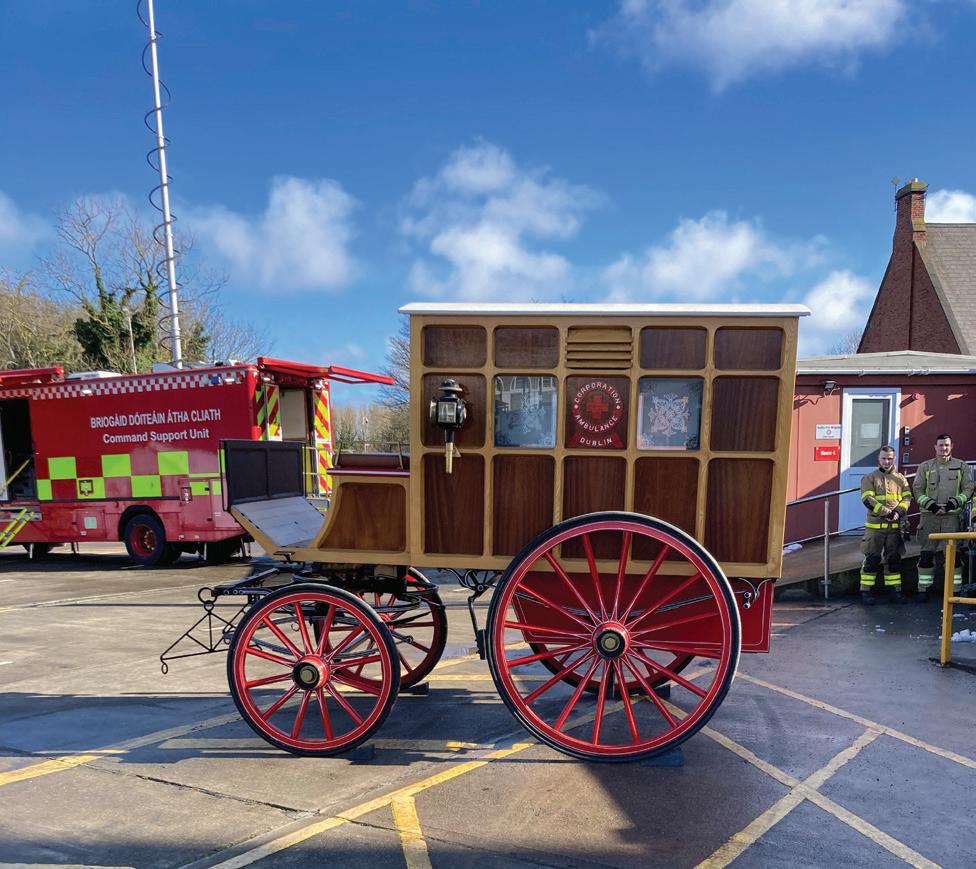

An Exhibition Celebrating 125 Years of Dublin Fire Brigade’s Ambulance Service was Launched at their Training Centre in March
As a celebration of Dublin Fire Brigade Ambulance’s 125th year serving the people of Dublin, a new exhibition detailing the development of the service has been created by Brigade Training O cer Brendan Carroll, and Fire ghter/ Paramedics Darren Donovan and Stephen O’Reilly.
Launched on 2 March at the DFB Training Centre, it is on show so that all DFB members can learn about and appreciate the evolution of this service
and the role they play within a proud history.
On a cold Saturday morning, guests could see a selection of DFB uniforms from throughout the years, as well as several models in specialist gear, as they made their way down the corridor of the Training Centre towards the exhibition space.
BTO Carroll welcomed those in attendance before the MC, District O cer Hugh O’Leary, introduced Chief Fire O cer Dennis Keeley to the stage to praise the work of those who created


the display and the DFB paramedics in general.
CFO Keeley said it was a great honour to be Chief Fire O cer at a time when such a landmark is being made, adding: “While we mark this milestone, we must also recognise the people serving today and those who have gone before us who made such a crucial contribution to society.”
Minister Darragh O’Brien, who couldn’t attend in person, recorded a video message thanking DFB’s ambulance service for the work they have done for

the last 125 years, before historian Donal Fallon gave an excellent talk about the history of the service.
He pointed out that while the display shows the “big days” in the 125-year history, “it is not just the big days that the DFB ambulance is there, they are there every day and night, for the last 125 years, and that should be remembered.”
With the walls of the room adorned with a fascinating timeline of major DFB Ambulance events and milestones, attendees were able to very quickly gain an appreciation for the service provided since 1898, but there were further spectacles to enjoy as guests were brought outside to see DFB personnel carry out skills displays that showcased how they combine the re, rescue and
paramedic role with a patient-centred approach.
ese included a BA re rescue, vehicle extrication, Hi-Line rescue, HazMat scenario and CPR demonstration, as well as a tour of the vehicles, tools, equipment and other resources used by DFB personnel. Each display was carried out with an explanation for the crowds of what was happening and the skills required to carry out the job successfully, and all involved must be congratulated on a great job.
D/O O’Leary summed up the proceedings nicely, saying: “We are a re and rescue ambulance service, and it is world class, and what you have witnessed here today is world class, so we are extraordinarily lucky as the people of Dublin to have this service for 125 years.”



Australian
Intensive Care Paramedic
Tim Booth’s Funny But Incisive Book Recounts His Experiences
Working on a Busy Ambulance
“I couldn’t write a serious medical or ambulance book, so taking a light-hearted approach is the only way I know to communicate my experiences,” Tim Booth, an Australian Intensive Care Paramedic and author of You Called An Ambulance For What? tells me.
His book is at times very funny as it recounts many incidents that can most politely be described as ‘unbelievable time wasting’, but as the sub-title of Strange, Serious and Silly Stories of Life as a Paramedic suggests, it also gives an insightful look into what it is like to work on an ambulance in south-west Sydney, and raises serious issues around the challenges faced by paramedics not just in Australia, but across the world.
Even though, as the book frequently points out, Tim has spent more time tending to minor ailments than medical emergencies, his current profession is a far cry from his original job.
“I used to be a journalist for Top Gear magazine, which seems like a dream job for any bloke, and I’m o en asked why I would swap that for attending to someone vomiting on the street,” he says. “But there are a lot of parallels to being a journalist –90% of the time you are doing mundane stu and 10% of the time you are doing the super-exciting stu .
“Also, around 2010, all the men’s magazines were going broke. I saw the writing on the wall, and feared that I might not have a job soon, so I started thinking seriously what I could do. I gured that people are always going to get sick or fall out of trees or do stupid things, and someone who works with NSW Ambulance told me he worked four days and then gets ve days o , so that sounded pretty good, and I applied!”
e job obviously suited him as, just three years a er training and gaining experience working the suburbs of Sydney, he became an Intensive Care Paramedic, the equivalent of an Advanced Paramedic, but a er six years responding to countless unnecessary calls, he felt the need to address the issues he saw were endangering the general public and ambulance sta alike.
“ e turning point was around the time I became an Intensive Care Paramedic,” he tells me. “Even a er you get through the Intensive Care training course and all the stress of that, I was still being sent to the same rudimentary calls, a lot of which were time-wasting. ere is also a very big online paramedic community and I saw that the number of time-wasting calls was a global problem, not just isolated to New South Wales.
“Before I joined, I thought paramedics only went to emergencies. I had no idea that more than 90% of calls were either nuisance incidents or very minor issues, and I thought the general public deserves to know about this. eir tax dollars are going to this service, and then when one day they might need an ambulance, it’s delayed because it is stuck with someone who has a blocked nose.”
e incident with a patient who had a blocked nose is detailed in the rst chapter of the book, and sets the tone for what will follow, with more and more unbelievably trivial callouts that ba e, and sometimes infuriate Tim and his colleagues.
“ at callout was one of the rst ones I went to, and it really opened my eyes to what the job entails,” he says. “But there was also one person who called us out because he had lost his credit card. Instead of calling his bank, he called 000 to send paramedics to help him cancel his bank card. Every one of us has stories like that, I guarantee.”
Tim is not afraid to raise controversy, and his honest views on what is causing a higher than ever number of ‘time-wasting’ calls are de nitely contentious. He feels that the number of people with access to free health care, whether they need it or not, is damaging the health system.
“ ere is no deterrent,” he says. “ e people who don’t have the Pension Card (Australia’s equivalent of a Medical Card) have to pay €500 for an ambulance callout. Nobody is spending €500 to get a blocked nose checked out.
“Ambulance services are also very mitigation-conscious,” he adds. “ ey have a fear that the one in a thousand calls about a blocked nose turns out to be something
more serious. In writing this book and raising these issues, I wanted to get the message across to the public, but also to have it read by health executives and politicians because they are the ones with the power to make systemic change, which is what is needed. Education campaigns haven’t worked, especially in the age of entitlement and instant grati cation we live in, but I also appeal to the public, because there are people out there who need us but can’t get us, they are the ones who will be a ected.”
He also feels that the way emergency calls are currently triaged in Australia adds to cases of confusion or unnecessary responses.
“It takes just one word to trigger something as the di erence between an emergency response, a non-emergency response, or not getting an ambulance at all,” he tells me.
“For instance, someone with a blocked nose might say that they can’t breathe, so immediately it is a lights and sirens response, or if they have been coughing for three days and so they say they have a sore chest, again it’s an emergency response.
“When just about everybody has a mobile phone, there is no reason why we couldn’t introduce video triage calls. I can’t count the number of times I have been to a cardiac response call a er the call taker has been told the person is not breathing, and I have walked in to nd the person still on the phone with the call taker, but it’s still considered a cardiac arrest. How are we getting it so wrong?”
Interspersed with these important issues are the more light-hearted moments that many paramedics will identify with, such as the ubiquitous ‘object stuck where it shouldn’t be’ case.
“Yes, a broom handle that was stuck somewhere unpleasant,” he laughs. “ at really caught the attention of the press over here when the book came out. at story wasn’t in the book initially, funnily enough, but the publisher said ‘I think we need a story about something lodged in a body cavity, have you got one?’ And of course I did. I had thought it was overdone and a bit cliched, but the publisher said they

know what sells, and they were right. So I pulled one out, so to speak!”
e process of becoming a paramedic is covered very well in the book, but Tim also gets across the emotions of dealing with your rst case that will resonate, and his advice to new paramedics is this: “It de nitely is daunting. We have a big fear of messing up because we are so heavily scrutinised, but there are no shortcuts, and you just have to throw yourself into as many situations as possible. If you put your hand up for those big emergency calls and dive into them, that is the best way, go and get the exposure and constantly do things that challenge you until it becomes second nature.
“Early on you’ve got to expose yourself to as much as possible, look for those
opportunities and di erent cases because they may not present themselves on their own.”
One section of the book that is particularly hard-hitting (but told light-heartedly) is the part dealing with COVID-19, and Tim looks back at it with a mixture of bewilderment and fatigue at the fact that lessons don’t seem to have been learned.
“It seems like the whole thing has been forgotten about, not just by the public but also our organisations and health systems over here,” he tells me. “It was exhausting because there was just this constant fear, we were seeing images on the news of mass graves in di erent countries and then it comes to our shores and we don’t know
if our PPE is enough, are we putting it on correctly, how far away is the vaccine?
“Because Australia is such a big country geographically, a lot of areas didn’t experience it for a long time. In Sydney, we were going to houses where there were up to ten people, all with COVID-19, coughing all over us, and you felt like a canary in a coalmine, not knowing if you are bringing it home to your family.
“ is was well before the vaccine, and it died down for a bit until the Delta Wave came, in mid-2021 and it was like we hadn’t learned anything. ere was a vaccine but it hadn’t been rolled out, we hadn’t changed the supply chain for PPE.
“Also, some days we are in 40 degree heat over here, and we were going around in this PPE that hadn’t been upgraded, so it was like doing our job in bin bags, basically waterboarding ourselves with our masks. It was horrendous for a long time.
“But then very quickly it seems to have been forgotten about and we are back to callouts to really minor issues. It is like it never happened.”
As it talks about contentious issues and real medical incidents, the book includes an Author’s Note at the end that not just acts as a disclaimer but also nicely summarises the message Tim wants to get across.
“Anything medical involving patient privacy and con dentiality is a bit of a legal mine eld, so I had to mention that I changed names and genders, etc,” he tells me. “But also I wanted to add in that although the stories are funny to read, there is a serious underlying message about a problem we face, asking people to think twice before calling us. I am stressing the fact that there are people who do need us, so we don’t want people thinking that nobody should call us - de nitely use us in the case of a genuine emergency - but to think about the impact a call will have, not only on somebody else who really needs us, but also on the paramedics.”
Even though he uses pseudonyms, there has been some fallout since the book was published in Australia, with his employer’s Professional Conduct and Integrity Unit writing to him citing concerns over breaches

of their policies, but Tim was prepared for this and takes a philosophical view of it.
“I was very careful not to mention exactly who I work for in the book, although it is pretty obvious because there is only one in the State I work in, but I took all precautions of not identifying that,” he says. “You can’t really talk about these subjects without risking your career, which is something I have done,” he says. “I just wanted a way I could get the message across to people that is not the heavily sanitised version of what goes on in the reality TV shows Ambulance UK or Australia. I wanted to take the general public on the journey with me and show them the human side of being a paramedic.
“Every emergency service has a protected image, but I wanted to show that we are human and have emotions other than compassion and love for everybody, because occasionally we do get frustrated and tired and say things out of frustration.”
“If I was worried about losing my job, I would never have published the book in the rst place,” he adds. “But I felt the message itself is bigger than me, bigger than my employment, and it is something all paramedics want to say, so gured I’d deal with the fallout when it happens. Beg forgiveness rather than ask for permission!”
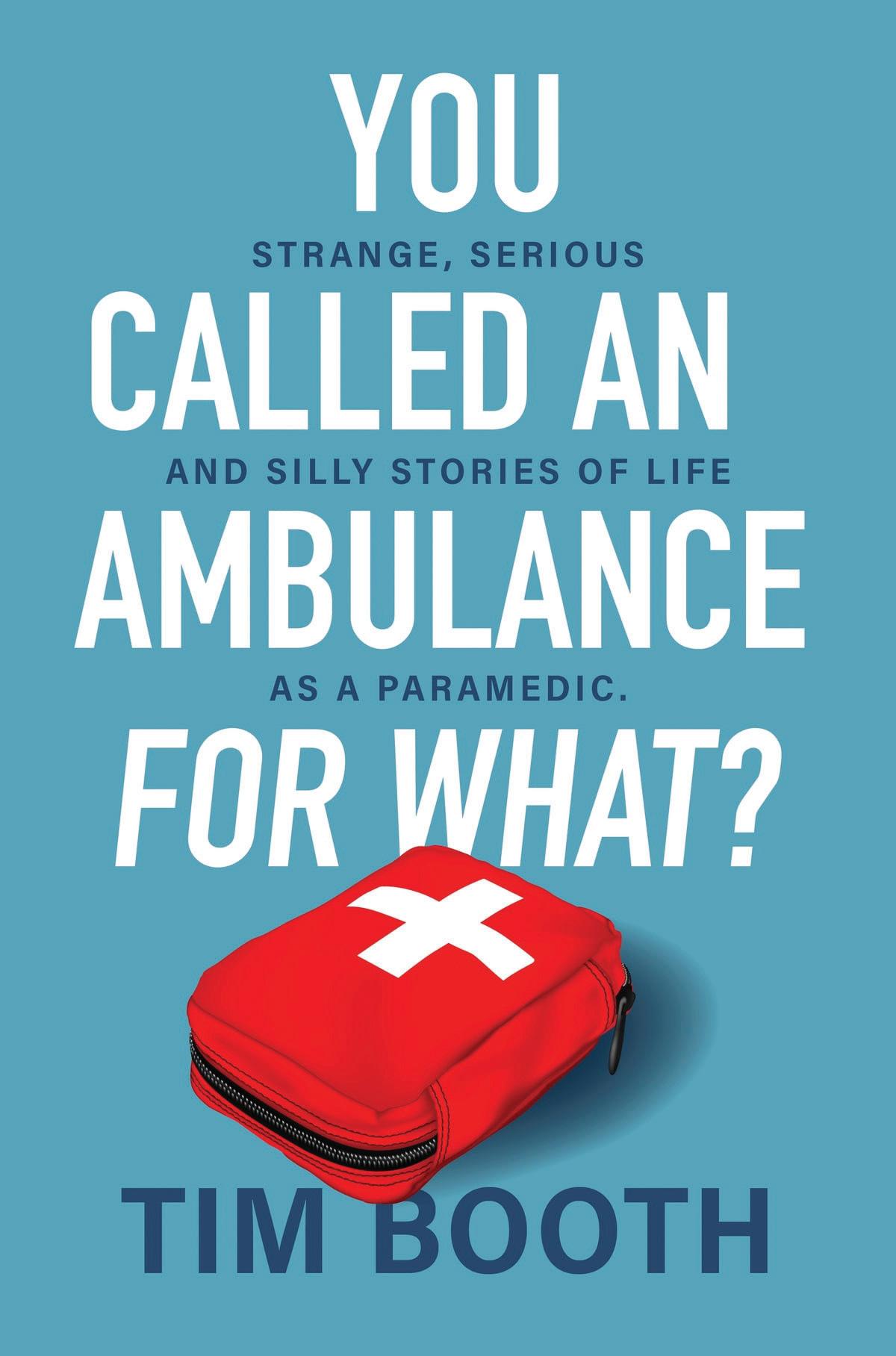

Emergency equipment specialists
Dräger have developed a new hands-free thermal imaging camera that displays live action imagery.
The UCF FireCore a ords continuous vision in low-visibility, high-risk environments.
Certified to IP67, it is resistant to water and dust and contains lithium-ion batteries for longer operational duration.
Designed for use within the company’s specially-designed full face mask, it can also be fitted to any model, shape or size of helmet using a simple bracket, and is fully detachable, allowing firefighters to extend their vision in di icult to reach areas and around corners.
Near Field Communication technology enables the cameras to connect to an inmask display or transfer from one helmet to another.
Liz Milward, marketing manager for the Emergency Services and Rescue Services at Dräger Safety UK, said: “By providing thermal imaging technology inside the masks of firefighters, potential dangers can be spotted far more easily. Firefighters will also be able to operate ‘hands-free’ and, as a result, support emergency operations with far greater e iciency and reduced risk.”
ere are numerous re ghting robots on the market in recent years, but one entrepreneur and student from the University of Texas has developed possibly the most a ordable one to date.
FireBot is the result of four years of work by Siddarth akur, who was inspired by the death of a re ghter in Dallas in 2013 to develop a tool that would replace the need for re ghters to enter unsafe buildings without prior knowledge of the environment.
Made from special alloys and cooling technologies, it can withstand temperatures up to 1,000C and ames up to 10 feet high, can be remotely controlled using a smartphone.
Whereas other re ghting robots on the market, such as the ermite RS3, can cost around €250,000, FireBot will be priced at around €80,000, and will be available for purchase or lease through a Robotics-as-a-Service (RaaS) model.
It will also have a lifespan of ten years.
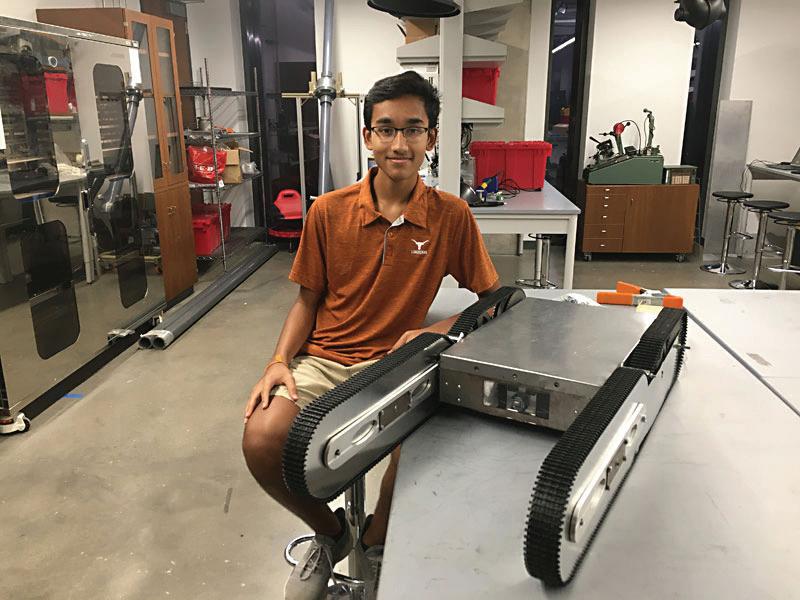

A flying ambulance designed to reach speeds of almost 300mp/h that can get to emergency sites within minutes has secured funding from the US Air Force, and could be on the market by 2027.
Californian firm Jump Aero designed the emissions-free JA1 Pulse vehicle to help medical professionals carrying critical lifesaving equipment arrive at the scenes of remote emergencies as quickly as possible.
The firm has already secured its first commercial order from the Danish Falck Ambulance Services, who said the product will “revolutionise the future of emergency services”.
The JA1 Pulse has a maximum capacity of 330lbs (150kgs), so is capable of flying one trained pilot-medic carrying emergency equipment such as a heart monitor, automated CPR machine and oxygen supply. The pilot will also be equipped with a parachute designed to provide backup in case of emergencies.
It will have simplified flight controls to help the pilot fly the aircraft without high levels of training.
As it is not designed to carry patients, the JA1 Pulse will obviously not replace the traditional ambulance, but can access areas far ore quickly while waiting for more lifesaving personnel to arrive.
The US Air Force has already signed a contract worth €3.5million and promised a further €3.5m to fund the first prototype.
A tool invented by re ghters in Kansas City, Missouri, has been developed by Suppression Gear Inc, with the recent unveiling of the VIKCTIM Drag Strap, an innovative lifesaving tool that sims to increase e ciency at rescue operations.
e Drag Strap addresses the challenges of di cult to move injured people by providing an integrated, secure, easy to use method of grabbing and transporting them with speed and safety.
Its unique design allows for e ortless integration into most existing re ghting PPE, o ering an immediately applicable, cost-e ective solution for enhancing rescue operations.
“ e VIKCTIM Drag Strap doesn’t just make our jobs easier, it fundamentally improves the chances for victims in rescue scenarios,” says Chad Dailey, inventor and a re ghter with 32 years of experience. “By enhancing grip strength and stability, we’re able to act more quickly, ultimately providing a faster and safer rescue for those in dire situations.”

Your people trust you to put the best pension solution in place for them and with Zurich being voted number 1 for investment excellence since 2014 by Brokers Ireland*, you can trust our commitment to excellence.
Trust our experience
• Providing pension excellence for employers and employees in the Irish market for over 40 years.
Trust our innovation
• Driving employee engagement with forward thinking products and investment design, makes managing your corporate pensions easy.
Trust our active management
• Delivering better retirement outcomes through excellence in active investment management.**
To find out more about the Zurich Master Trust talk to your Zurich Broker Consultant or visit zurichcorporate.ie
Warning: Past performance is not a reliable guide to future performance.
Warning: The value of your investment may go down as well as up.
Warning: If you invest in this product you may lose some or all of the money you invest.
Warning: Benefits may be affected by changes in currency exchange rates.
* Awarded Investment Excellence by Brokers Ireland in 2014, 2015, 2016, 2017, 2018, 2019, 2021, 2022 and 2023.
** Independent survey, Rubicon Investment Consulting Limited. Annualised return of 8.1% over 20 years as of 29th February 2024. Zurich Life Assurance plc is regulated by the Central Bank of Ireland.
Virgin Media faced a backlash when it chose to commission and air Confessions of a Crime Boss, the TV series based on journalist Jason O’Toole’s interviews with the notorious John Gilligan. Justice Minister Helen McEntee went on record to declare she wouldn’t be watching it, while the brother of murdered journalist Veronia Guerin understandably criticised and questioned the morality of airing it. Now, those interviews are laid out in stark if compelling black and white in O’Toole’s own book on the convicted criminal.
Over the course of 40 hours, he sat with and listened to Gilligan recount aspects of his life story, from his early days as a petty thief to becoming a major player in money laundering, drug dealing, and numerous other violent crimes, mixing with serious criminals including Martin ‘ e General’ Cahill, Christy ‘ e Dapper Don’ Kinahan, Patrick ‘Dutchy’ Holland and John ‘ e Coach’ Traynor.
O’Toole explained upon publication that in writing this book, he would never let it veer towards glori ed biography, and would not celebrate the life and crimes of Gilligan, but rather that he would discuss speci c crimes, criminal set-ups and the gangland scene. As a result, we get a sometimes shocking, sometimes gruesome, but usually fascinating insight into how major criminals think, how they talk and act, and what drives them to pursue the lives they do.
e one question everyone wants answered is the extent of Gilligan’s involvement in the murder of Veronica Guerin, and O’Toole openly admits that he knew the convicted criminal would never admit to playing any part, but the book does see Gilligan divulge a huge amount of information regarding other crimes and people in a way not seen before.
Why did he agree to interviews in which he shares underworld secrets at this stage in his life? Rumoured to have millions secretly stashed away, it can’t be for any royalties. Admitting he thinks he is going to Hell,
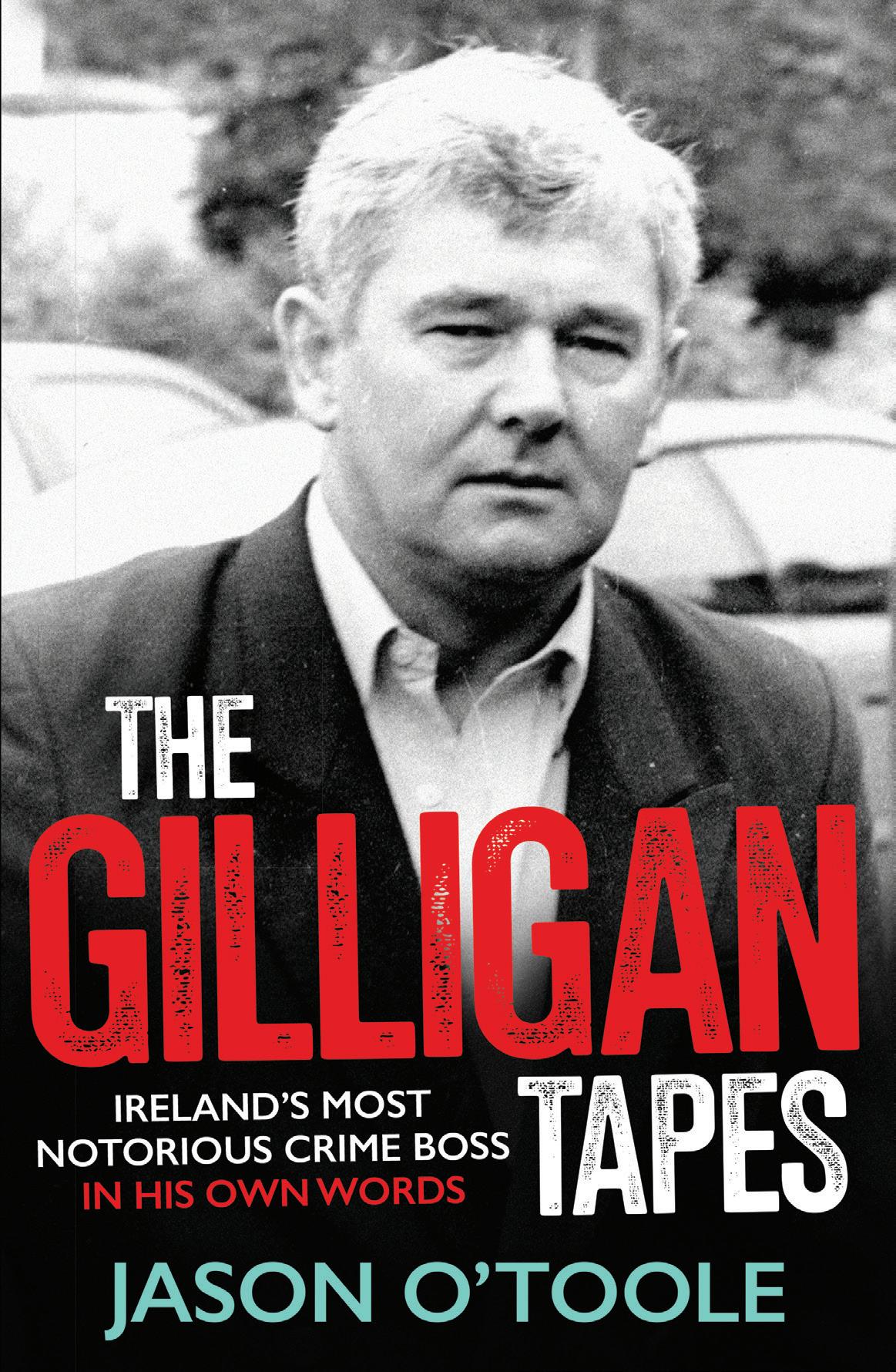
it can’t be for redemption. If it’s an attempt to nd an appreciative audience of apprentice criminals, O’Toole is clear this isn’t the case, saying: “ e hope is that, if younger readers read this, who might otherwise be vulnerable to getting involved in that world, it will steer them away from a life of crime, because Gilligan repeatedly says in the book, crime does not pay. He feels he has wasted his life.”
Whatever the reason, whatever you think of Gilligan - Psychopath? Ruthless opportunist? Evil personi ed? - and whatever you think about the lives of criminals being given the coverage they get, this is a fascinating book that is well worth reading.
AUTHOR:
JASON O’TOOLE
PUBLISHER:
MERRION PRESS
AVAILABLE:
EASONS, HODGES & FIGGIS, DUBRAY
PRICE: €18.99

In Ireland, we love property and land. Our history has dictated that we have always sought to own it. But in today’s world, where Ireland has one of the highest average house prices in Europe, and rentals are sky-high, we might be excused for asking how this happened? And if we are being priced out of the property market, who really owns it? In his latest book, Matt Cooper asks those questions, examining the key players behind the scenes of Irish property ownership to detail who really controls the valuable land where we live, work and play, and how they acquired it in the first place. He looks into foreign investment to explain why our little island is so appealing to it, and what it means for our ordinary citizens when the likes of shopping centres, data centres, wind farms and forestry belong to someone else. Excellently researched and explained, this is a compelling account of the Irish property landscape that makes for grim but eye-opening reading.
AUTHOR: JONAS JONASSON
PUBLISHER:
4TH ESTATE
AVAILABLE:
EASONS, HODGES & FIGGIS, DUBRAY
PRICE: €12.99
AUTHOR: MATT COOPER
PUBLISHER: GILL BOOKS
AVAILABLE:
EASONS, HODGES & FIGGIS, DUBRAY
PRICE: €19.99

There are few authors who can repeatedly master the combination of o -beat humour and touching drama, but Swedish journalist and author Jonas Jonasson is one. His debut novel The Hundred-Year-Old Man Who Climbed Out a Window and Disappeared is a modern classic, and he followed it up with superb storytelling in The Girl Who Saved the King of Sweden, and Hitman Anders and The Meaning Of It All, among others. His sixth novel, The Prophet and The Idiot, is another great read full of memorably quirky characters who find themselves in strange circumstances. Petra, a self-taught astrophysicist, believes she knows when the world will end, and together with doomsday prophet Johan and 75-year-old widow Agnes, who lives a double life as an online teenage influencer, they race across Europe trying to make the most of the time they have left. A very funny, touching and feel-good adventure you won’t want to put down.

With the Rugby World Cup done and dusted, we can expect a deluge of books on the subject in the near future, and with so many of its stars shining at the tournament in France, now is the perfect time for this history of Leinster Rugby to come out. As one of the most successful and influential sporting clubs in Ireland, the history of this institution that was established in 1879 is as fascinating as it is stellar. Detailing the rich history from the club’s foundation, through the sport’s amateur years, to its more recent unprecedented success on the national and European stage, this book also examines rugby’s relationships with politics and class in Ireland.
The author also ruminates on the influence Leinster Rugby, its players and its philosophy have had on education, business and politics throughout the province and the country in general, but at its heart, this book is a celebration of not just the successes, but the club’s enduring commitment to teamwork, integrity and community.
AUTHOR: DR DAVID DOOLIN
PUBLISHER:
MERRION PRESS
AVAILABLE:
EASONS, HODGES & FIGGIS, DUBRAY
PRICE: €24.99
When a child loses their home, they lose their entire world.

There are almost 4,000 children homeless in Ireland. Donate now.


